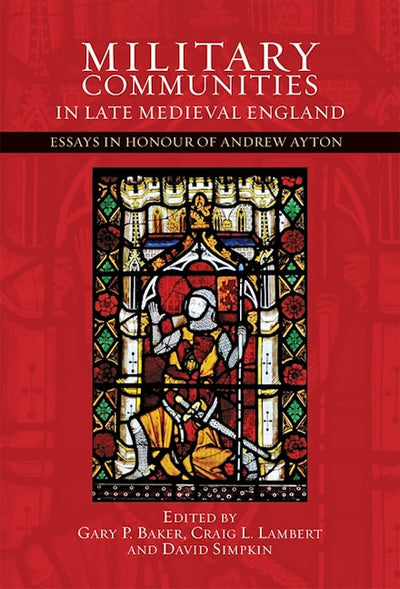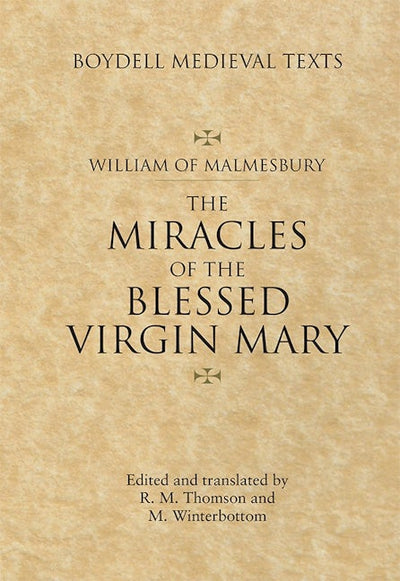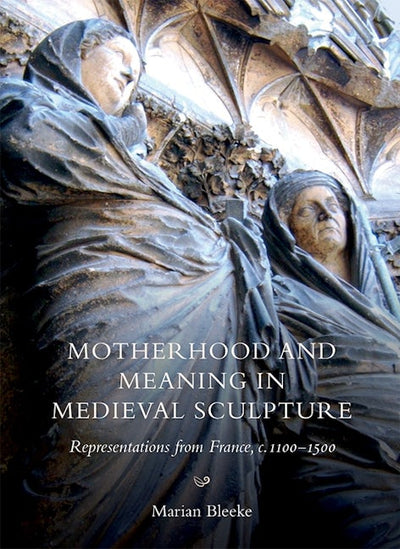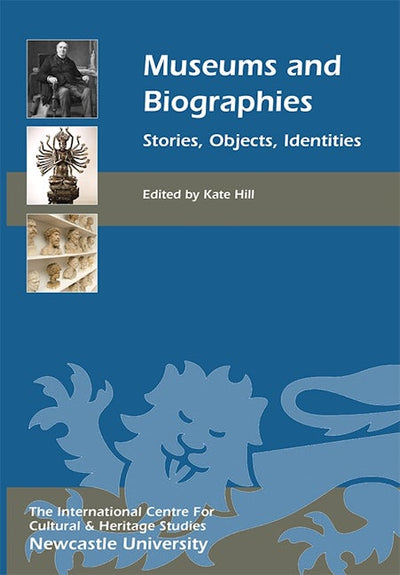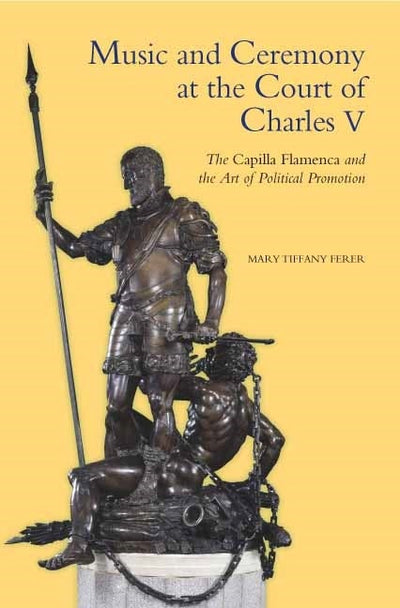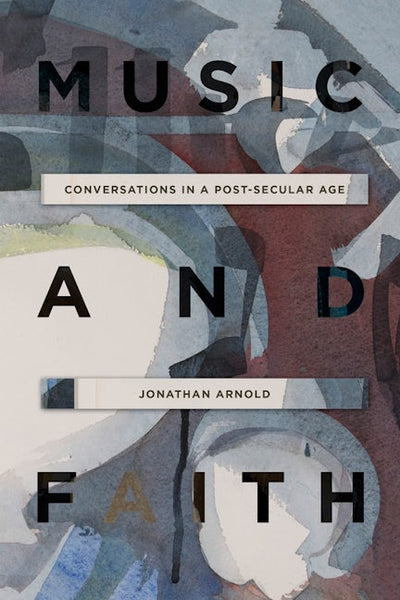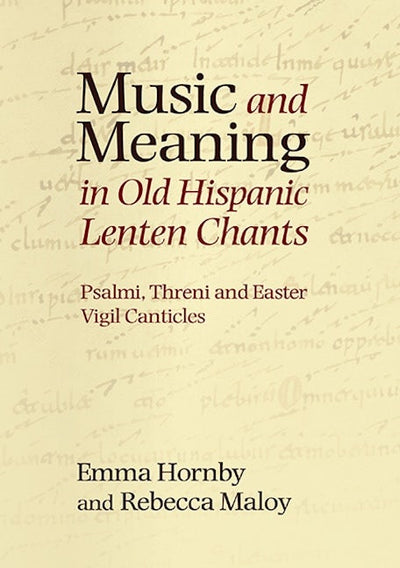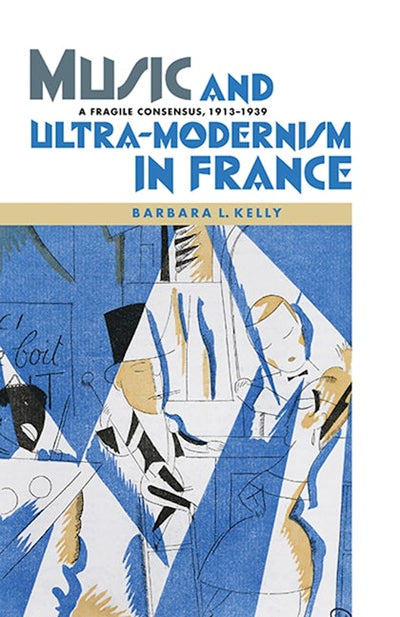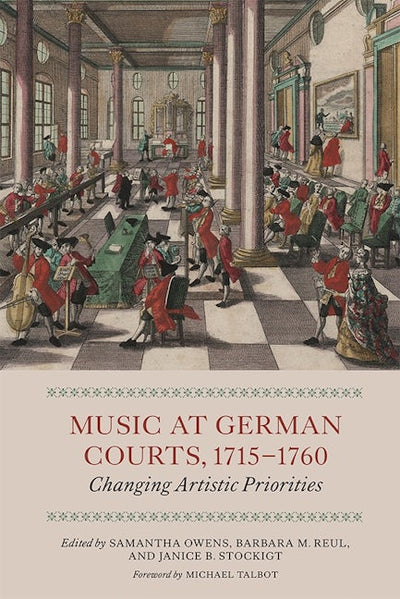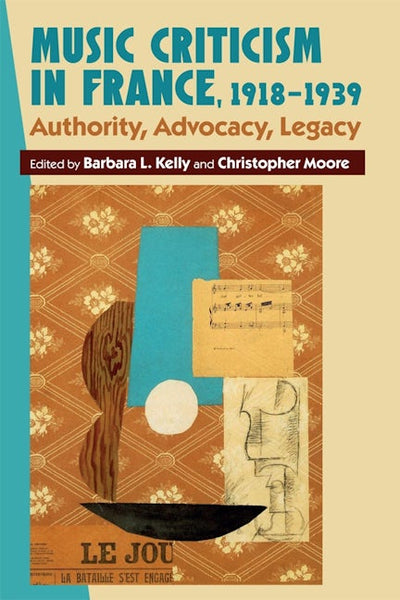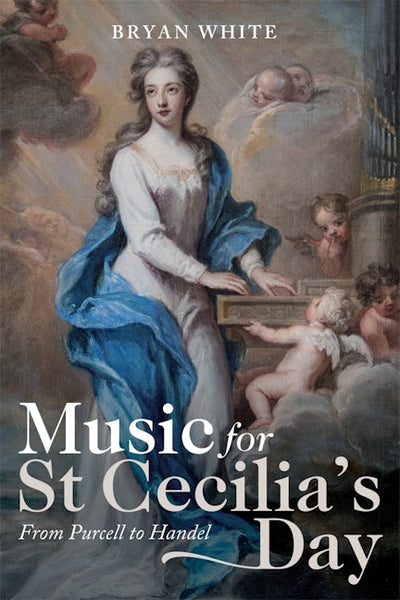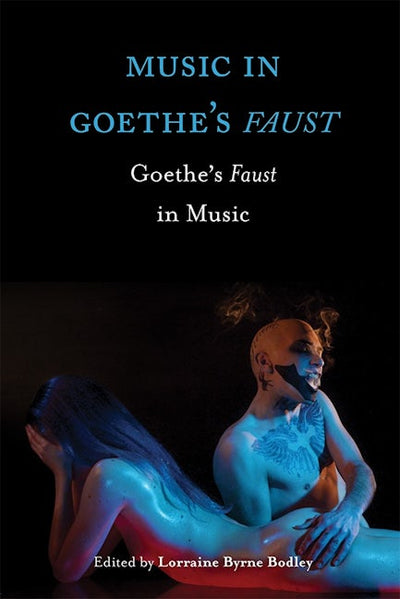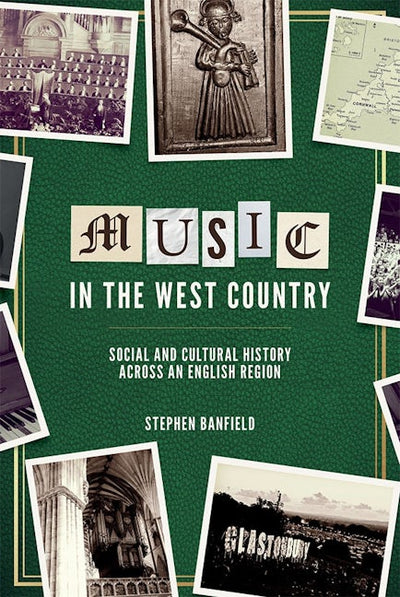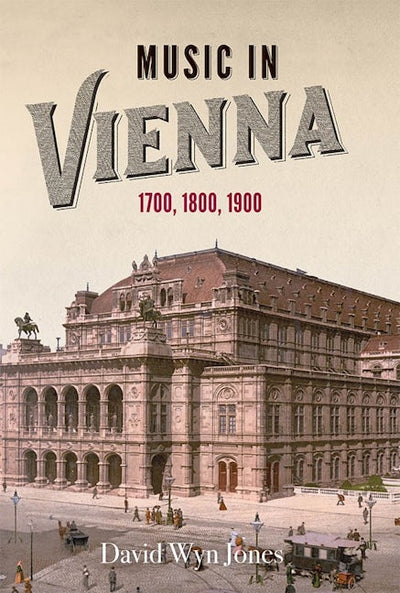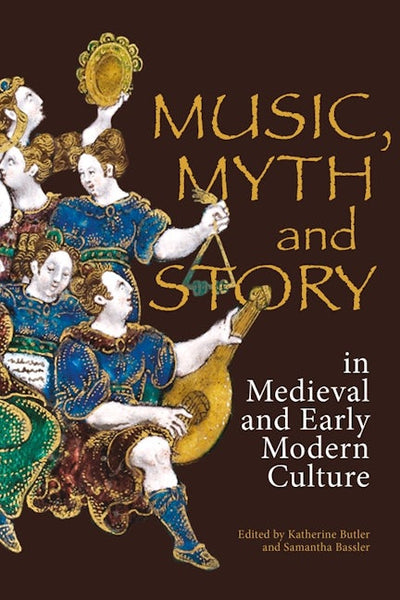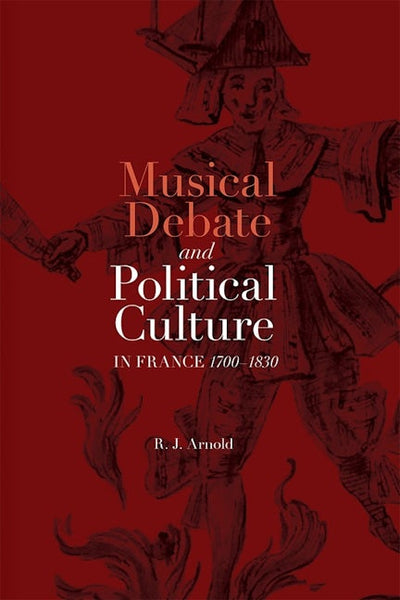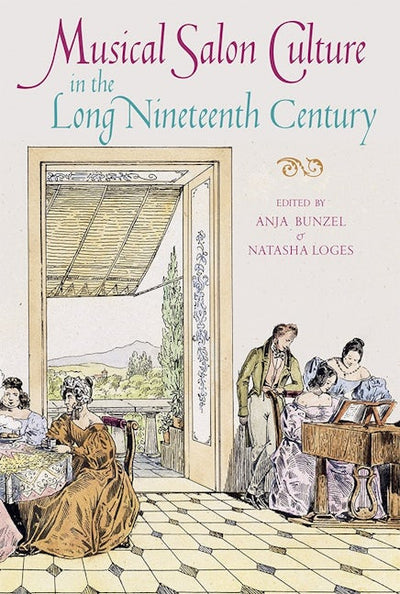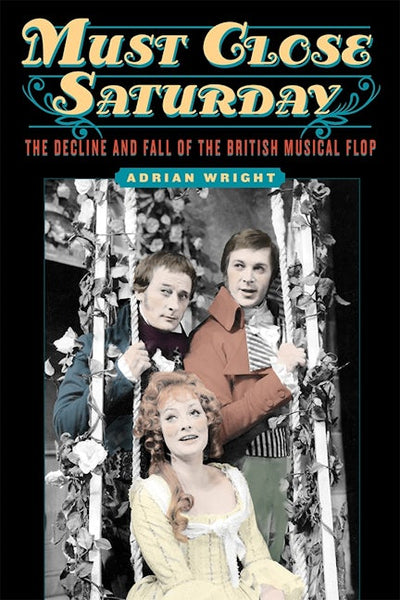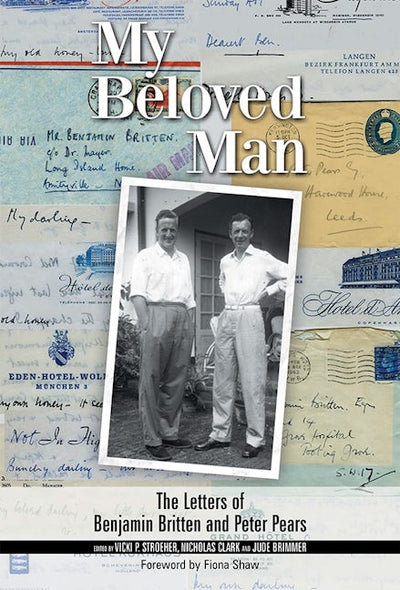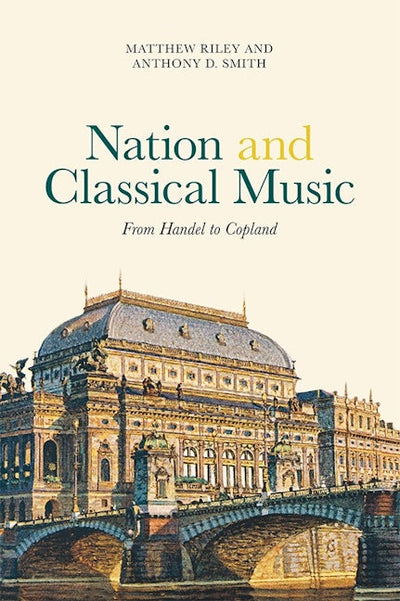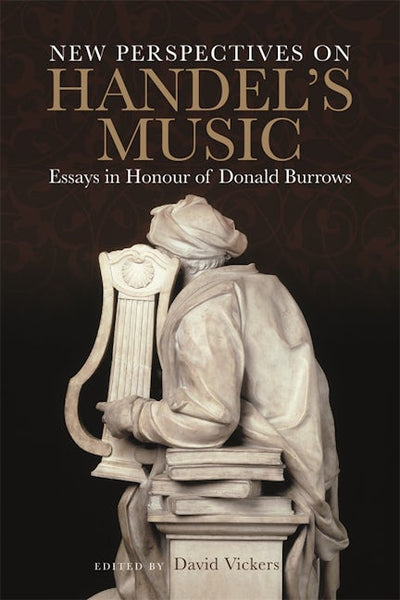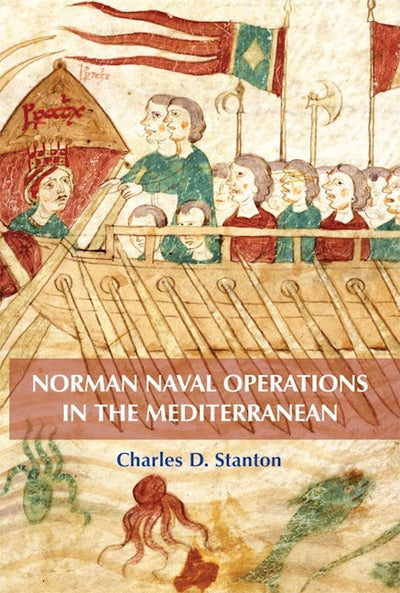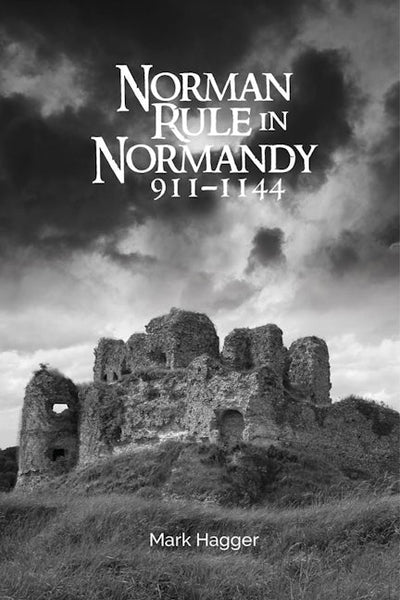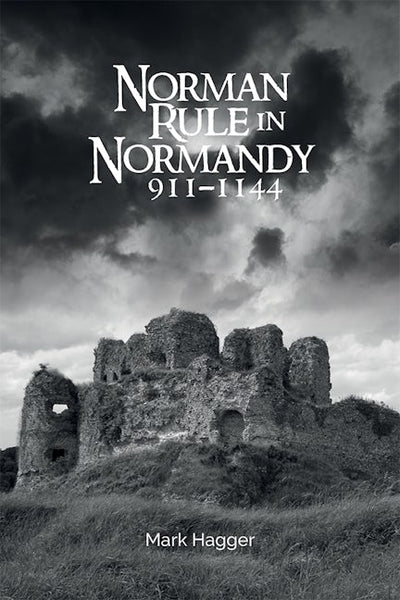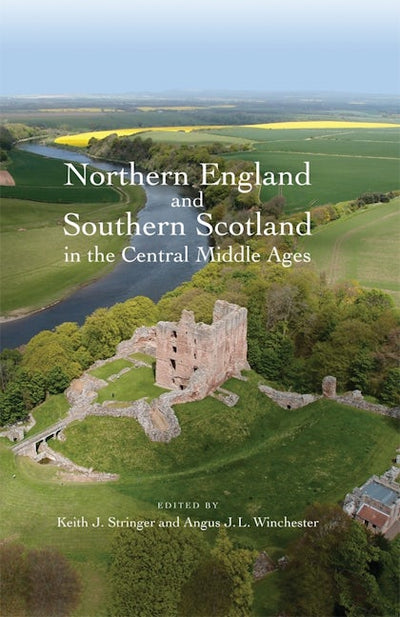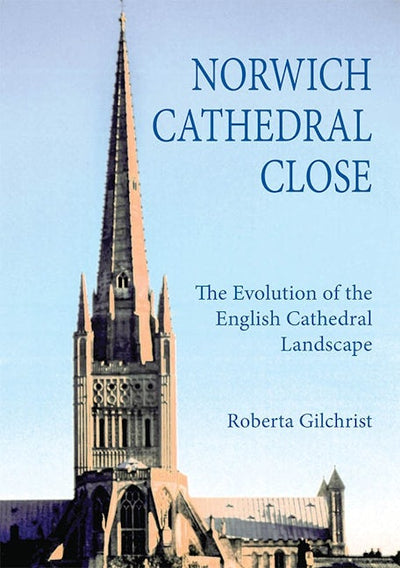-
Antiques & Collectibles
-
Architecture
-
Art
-
Bibles
-
Biography & Autobiography
-
Body, Mind & Spirit
-
Business & Economics
-
Comics & Graphic Novels
-
Computers
-
Cooking
-
Crafts & Hobbies
-
Design
-
Education
-
Family & Relationship
-
Fiction
-
Foreign Language Study
-
Games & Activities
-
Gardening
-
Health & Fitness
-
History
-
House & Home
-
Humor
-
Juvenile Fiction
-
Juvenile Nonfiction
-
Language Arts & Disciplines
-
Law
-
Literary Collections
-
Literary Criticism
-
Mathematics
-
Medical
-
Miscellaneous
-
Music
-
Nature
-
Performing Arts
-
Pets
-
Philosophy
-
Photography
-
Poetry
-
Political Science
-
Psychology
-
Reference
-
Religion
-
Self-Help
-
Science
-
Social Science
-
Sports & Recreation
-
Study Aids
-
Technology & Engineering
-
Transportation
-
Travel
-
True Crime
-
Young Adult Fiction
-
Young Adult Nonfiction
-
Antiques & Collectibles
-
Architecture
-
Art
-
Bibles
-
Biography & Autobiography
-
Body, Mind & Spirit
-
Business & Economics
-
Comics & Graphic Novels
-
Computers
-
Cooking
-
Crafts & Hobbies
-
Design
-
Education
-
Family & Relationship
-
Fiction
-
Foreign Language Study
-
Games & Activities
-
Gardening
-
Health & Fitness
-
History
-
House & Home
-
Humor
-
Juvenile Fiction
-
Juvenile Nonfiction
-
Language Arts & Disciplines
-
Law
-
Literary Collections
-
Literary Criticism
-
Mathematics
-
Medical
-
Miscellaneous
-
Music
-
Nature
-
Performing Arts
-
Pets
-
Philosophy
-
Photography
-
Poetry
-
Political Science
-
Psychology
-
Reference
-
Religion
-
Self-Help
-
Science
-
Social Science
-
Sports & Recreation
-
Study Aids
-
Technology & Engineering
-
Transportation
-
Travel
-
True Crime
-
Young Adult Fiction
-
Young Adult Nonfiction

Military Communities in Late Medieval England
Regular price $130.00 Save $-130.00From warhorses to the men-at-arms who rode them; armies that were raised to the lords who recruited, led, administered, and financed them; and ships to the mariners who crewed them; few aspects of the organisation and logistics ofwar in late medieval England have escaped the scholarly attention, or failed to benefit from the insights, of Dr Andrew Ayton. The concept of the military community, with its emphasis on warfare as a collective social enterprise, has always lain at the heart of his work; he has shown in particular how this age of warfare is characterised by related but intersecting military communities, marked not only by the social and political relationships within armies and navies, but by communities of mind, experience, and enterprise.
The essays in this volume, ranging from the late thirteenth to the early fifteenth century, address various aspects of this idea. They offer investigations of soldiers' and mariners' equipment; their obligations, functions, status, and recruitment; and the range and duration of their service.
Gary P. Baker is a Research Associate at the University of East Angliaand a Researcher in History at the University of Groningen; Craig L. Lambert is Lecturer in Maritime History at the University of Southampton; David Simpkin teaches history at Birkenhead Sixth-Form College.
Contributors: Gary P. Baker, Adrian R. Bell, Peter Coss, Anne Curry, Robert W. Jones, Andy King, Craig L. Lambert, Tony K. Moore, J.J.N. Palmer, Philip Preston, Michael Prestwich, Matthew Raven, Clifford J. Rogers, Nigel Saul, David Simpkin.

Military Cultures and Martial Enterprises in the Middle Ages
Regular price $130.00 Save $-130.00The essays in this volume honour the career and achievements of Richard Abels, the distinguished historian of medieval military history; in particular, they aim to reflect how the "cultural turn" in the field has led to exciting new developments in scholarship.
Ranging from the late eighth century to the fifteenth, from northern England to the Levant, the chapters analyze how medieval kings and commanders practiced a genuine military science, how themeanings of victory and defeat were constructed by chroniclers and whole societies, how wars were remembered and propagandized, and how religion and war mixed.

Military Institutions on the Welsh Marches
Regular price $120.00 Save $-120.00Between 1066 and 1282 two quite different societies were juxtaposedalong the Welsh Marches: a feudally-based Anglo-Norman one, and aCeltic Welsh one. It has been conventional to consider the formerto have been more sophisticated and developed than the latter but, in fact, the situation was more complex, and during more than two centuries of attacks and campaigns each society borrowed from the other.
This book is the first comparative study of the twomilitary systems. It considers issues pertinent to the entire border region, and, indeed, to other medieval marches. Specific topics examined include: the nature of Welsh military service, Welsh tactics and the English response, the development and functioning of Clun (a representative border castlery), the local command in Shropshire and the so-called "wardens" of the March, and the extent to which Welsh military customs influenced those of the Marches and of England.
FREDERICK SUPPE is Professor of History at Ball State University.

Military Society and the Court of Chivalry in the Age of the Hundred Years War
Regular price $29.99 Save $-29.99The highest and most sovereign things a knight ought to guard in defence of his estate are his troth and his arms. So declared Richard, Lord Scrope of Bolton, before the Court of Chivalry, eloquently encapsulating the fundamental role heraldic identity played in the lives of the late medieval English gentry. The Court of Chivalry was England's senior military court during the age of the Hundred Years War (1337-1453), but unfortunately its medieval registers are now lost and only a bare few cases survive. This book explores three of the best preserved of those cases: Scrope v. Grosvenor (1385-91), Lovel v. Morley (1386-7) and Grey v. Hastings (1407-10), disputes in which competing knightly families claimed rightful possession of the same coat-of-arms. Hundreds of witnesses gave evidence in each of these cases, in the process providing vivid insights into the military, social, and cultural history of late medieval England.
This study asks a number of important questions. How did the plaintiffs and defendants choose their witnesses? What motives and constraints shaped their choices? How did they gain access to the various gentry networks that spoke in their defence? To what extent did lordly influence impact upon the composition of each witness list? How well did the witnesses themselves know each other? What role did bonds of regional solidarity play before the Court? Perhaps most significantly, what does the testimony itself reveal about the chivalric culture of the age? These questions enable the historian to probe in considerable depth the character of gentry military society, and its chivalric ethos, at a time when the victories of Edward III (1327-1377) were receding ever deeper into popular memory and the triumphs of Henry V (1413-1422) still lay in the future.
PHILIP CAUDREY is an Honorary Research Associate at the University of Tasmania, Australia.

Military Society and the Court of Chivalry in the Age of the Hundred Years War
Regular price $120.00 Save $-120.00The highest and most sovereign things a knight ought to guard in defence of his estate are his troth and his arms. So declared Richard, Lord Scrope of Bolton, before the Court of Chivalry, eloquently encapsulating the fundamental role heraldic identity played in the lives of the late medieval English gentry. The Court of Chivalry was England's senior military court during the age of the Hundred Years War (1337-1453), but unfortunately its medieval registers are now lost and only a bare few cases survive. This book explores three of the best preserved of those cases: Scrope v. Grosvenor (1385-91), Lovel v. Morley (1386-7) and Grey v. Hastings (1407-10), disputes in which competing knightly families claimed rightful possession of the same coat-of-arms. Hundreds of witnesses gave evidence in each of these cases, in the process providing vivid insights into the military, social, and cultural history of late medieval England.
This study asks a number of important questions. How did the plaintiffs and defendants choose their witnesses? What motives and constraints shaped their choices? How did they gain access to the various gentry networks that spoke in their defence? To what extent did lordly influence impact upon the composition of each witness list? How well did the witnesses themselves know each other? What role did bonds of regional solidarity play before the Court? Perhaps most significantly, what does the testimony itself reveal about the chivalric culture of the age? These questions enable the historian to probe in considerable depth the character of gentry military society, and its chivalric ethos, at a time when the victories of Edward III (1327-1377) were receding ever deeper into popular memory and the triumphs of Henry V (1413-1422) still lay in the future.
PHILIP CAUDREY is an Honorary Research Associate at the University of Tasmania, Australia.

Minstrels and Minstrelsy in Late Medieval England
Regular price $190.00 Save $-190.00Minstrels were a common sight and sound in the late Middle Ages. Aristocrats, knights and ladies heard them on great occasions (such as Edward I's wedding feast for his daughter Elizabeth in 1296) and in quieter moments in their chambers; town-dwellers heard and saw them in civic processions (when their sound drew attention to the spectacle); and even in the countryside people heard them at weddings, church-ales and other parish celebrations. But who were the minstrels, and what did they do? How did they live, and how easily did they make a living? How did they perform, and in what conditions? The evidence is intriguing but fragmentary, including literary and iconographic sources and, most importantly, the financial records of royal and aristocratic households and of towns. These offer many insights, although they are often hard to fit into any coherent picture of the minstrels' lives and their place in society. It is easy to see the minstrels as peripheral figures, entertainers who had no central place in the medieval world. Yet they were full members of it, interacting with the ordinary people around them, as well as with the ruling classes: carrying letters and important verbal messages, some lending huge sums of money to the king (to finance Henry V's Agincourt campaign in 1415, for instance), some regular and necessary civic servants, some committing crimes or suffering the crimes of others. In this book Rastall and Taylor bring to bear the available evidence to enlarge and enrich our view of the minstrel in late medieval society.

Minstrels and Minstrelsy in Late Medieval England
Regular price $54.95 Save $-54.95Minstrels were a common sight and sound in the late Middle Ages. Aristocrats, knights and ladies heard them on great occasions (such as Edward I's wedding feast for his daughter Elizabeth in 1296) and in quieter moments in their chambers; town-dwellers heard and saw them in civic processions (when their sound drew attention to the spectacle); and even in the countryside people heard them at weddings, church-ales and other parish celebrations. But who were the minstrels, and what did they do? How did they live, and how easily did they make a living? How did they perform, and in what conditions? The evidence is intriguing but fragmentary, including literary and iconographic sources and, most importantly, the financial records of royal and aristocratic households and of towns. These offer many insights, although they are often hard to fit into any coherent picture of the minstrels' lives and their place in society. It is easy to see the minstrels as peripheral figures, entertainers who had no central place in the medieval world. Yet they were full members of it, interacting with the ordinary people around them, as well as with the ruling classes: carrying letters and important verbal messages, some lending huge sums of money to the king (to finance Henry V's Agincourt campaign in 1415, for instance), some regular and necessary civic servants, some committing crimes or suffering the crimes of others. In this book Rastall and Taylor bring to bear the available evidence to enlarge and enrich our view of the minstrel in late medieval society.

Miracles of the Blessed Virgin Mary
Regular price $29.99 Save $-29.99Written around 1135 by the Benedictine monk, historian and scholar William of Malmesbury (d. 1143), The Miracles of the Blessed Virgin Mary belongs in the first wave of collected miracles of the Virgin, produced by EnglishBenedictine monks in the 1120s and '30s. Only two copies of William's work survive in anything like its complete form, and only one of them represents the finished product. But many of the stories were also transmitted separately,in groups or individually; the systematic use of this evidence is a feature of this new text.
Originally written in elegant Latin, this paperback takes the translation from the original hardcover to produce an attractive edition for the student or general reader. It retains the introduction, notes and appendices - important to understand William's quotations and echoes from ancient authors - while presenting the text in a modern English version as elegant and engaging as the original.
Anyone wishing to compare the original and this translation may refer to the hardcover which remains available (9781783270163).

Miracles of the Blessed Virgin Mary
Regular price $170.00 Save $-170.00This is the first title in the new series Boydell Medieval Texts, which will provide scholarly editions of major works with facing translation.
Written c. 1135 by the Benedictine monk, historian and scholar William ofMalmesbury (d. 1143), The Miracles of the Blessed Virgin Mary is of interest on several counts. It belongs in the first wave of collected miracles of the Virgin, produced by English Benedictine monks in the 1120s and '30s.These collections were to be influential across Europe and through the rest of the medieval period. Only two copies of William's work survive in anything like its complete form, and only one of them represents the finished product. But many of the stories were also transmitted separately, in groups or individually; the systematic use of this evidence is a feature of this new text.
The work is written in elegant Latin and embellished with William's customary erudition, including frequent quotations and echoes from (sometimes unusual) ancient authors. His instinct as a historian is to the fore, as he tries to establish historical context and credibility for his stories. Above all, the scope of the collection is surprisingly international, including stories drawn from all around the Mediterranean.
This is an important document in the history of Marian devotion in medieval Europe. In his long Prologue (which enjoyed some independent circulation), William argues strongly for the Virgin's Immaculate Conception and bodily Assumption, doctrines still not generally accepted in western Europe at the time.
With the appearance of this book all of William of Malmesbury's major works are available in modern editions and translations. A paperback edition of the translation alone is also available (9781783271962).

Missionary Women
Regular price $130.00 Save $-130.00This is the first comprehensive study of the role of gender in British Protestant missionary expansion into China and India during the late nineteenth and early twentieth centuries. Focusing on the experiences of wives and daughters, female missionaries, educators and medical staff associated with the London Missionary Society, the China Inland Mission and the various Scottish Presbyterian Mission Societies, it compares and contrasts gender relations within different British Protestant missions in cross-cultural settings. Drawing on extensive published and archival materials, this study examines how gender, race, class, nationality and theology shaped the polity of Protestant missions and Christian interaction with native peoples. Rather than providing a romantic portrayal of fulfilled professional freedom, this work argues that women's labor in Christian missions, as in the secular British Empire and domestic society, remained under-valued both in terms of remuneration and administrative advancement, until well into the twentieth century. Rich in details and full of insights, this work not only presents the first comparative treatment of gender relations in British Christian missionary movements, but also contributes to an understanding of the importance of gender more broadly in the high imperial age.
RHONDA A. SEMPLE is Assistant Professor ofHistory at the University of Northern British Columbia, Canada.

Mobility in the English Novel from Defoe to Austen
Regular price $120.00 Save $-120.00In 1700 the fastest coach from London to Manchester took five days. By 1790 the development of the turnpike road system across England had reduced this figure to twenty-seven hours, and both the landscape and the ways in which people experienced it had been radically transformed.
This revolution in transport came at the same time as the emergence of the novel as a dominant literary form in Britain. In this highly original reading of some of themajor novelists of the long eighteenth century - Defoe, Fielding, Smollett, Sterne and Austen - Chris Ewers shows how these two developments interacted. He argues that this reconfiguration of local geography and the new experience of moving through space at speed had a profound effect upon the narrative and form of the novel, leaving its mark on genre, prose technique, the depiction of class and gender relations and the way texts are structured. It is noaccident, he concludes, that the arrival of the novel, the literary form that uses life-as-a-journey as a master trope, is roughly co-terminous with the revolution of internal transport in Britain.
CHRIS EWERS is a lecturer in Eighteenth Century Literature at the University of Exeter

Modern Spiritualism and the Church of England, 1850-1939
Regular price $130.00 Save $-130.00From the moment of its arrival in Britain in 1852, modern spiritualism became hugely popular among all sections of society. As well as offering mysterious and entertaining séance phenomena, spiritualism was underpinned by a beliefthat the living could communicate with the departed and even come to know what life after death looked like. This book, offering the first detailed account of the theology of spiritualism, examines what happened when the Church of England, itself already grappling with questions about the nature of the afterlife, met with such a vibrant and confident presentation.
Although this period saw a gradual liberalising in the Church's own theology of heavenand hell this was not communicated to the wider public as long as sermons and liturgy remained largely framed in traditional language. Over time spiritualism, already embedded in common culture, explicitly influenced the thinkingof some Anglican clergy and implicitly began to permeate and shape popular Christianity - to the extent that even some of spiritualism's harshest critics made use of its colourful imagery. This study sets one significant aspect ofChristian doctrine alongside an attractive alternative and provides a fascinating example of the 'negotiation of belief', the way in which, in the interface between Church and culture, religious belief came to be refreshed and redefined.
GEORGINA BYRNE is an ordained Anglican priest and currently Director of Ordinands for the Diocese of Worcester and a Residentiary Canon at Worcester Cathedral.

Monasteries and Society in the British Isles in the Later Middle Ages
Regular price $130.00 Save $-130.00In recent years there has been an increasing interest in the history of the numerous houses of monks, canons and nuns which existed in the medieval British Isles, considering them in their wider socio-cultural-economic context; historians are now questioning some of the older assumptions about monastic life in the later Middle Ages, and setting new approaches and new agenda. The present volume reflects these new trends. Its fifteen chapters assess diverseaspects of monastic history, focusing on the wide range of contacts which existed between religious communities and the laity in the later medieval British Isles, covering a range of different religious orders and houses. This period has often been considered to represent a general decline of the regular life; but on the contrary, the essays here demonstrate that there remained a rich monastic culture which, although different from that of earlier centuries, remained vibrant.
CONTRIBUTORS: KAREN STOBER, JULIE KERR, EMILIA JAMROZIAK, MARTIN HEALE, COLMAN O CLABAIGH, ANDREW ABRAM, MICHAEL HICKS, JANET BURTON, KIMM PERKINS-CURRAN, JAMES CLARK, GLYN COPPACK, JENS ROHRKASTEN, SHEILA SWEETINBURGH, NICHOLAS ORME, CLAIRE CROSS

Monastic Hospitality
Regular price $130.00 Save $-130.00Hospitality was an integral part of medieval monastic life. In receiving guests the monks were following Christ's injunction and adhering to the Rule of St Benedict, as well as taking on an important role within society andproviding a valuable service for fellow religious.
This book draws on a wide range of sources to explore the practice and perception of monastic hospitality in England c.1070-c. 1250, an important and illuminating time in aEuropean and an Anglo-Norman context; it examines the spiritual and worldly concerns compelling monasteries to exercise hospitality, alongside the administrative, financial and other implications of receiving and caring for guests. Analysis focuses on the great Benedictine houses of Southern England (Abingdon, Bury St Edmunds, Canterbury, Reading, St Albans) for which a substantial and diverse body of material survives, but they are set in the context of other houses and other orders (chiefly the Cistercians) to show the wider picture in both England and Europe.
JULIE KERR is an Honorary Research Fellow at the University of St Andrews.

Monastic Revival and Regional Identity in Early Normandy
Regular price $120.00 Save $-120.00The rulers of Normany performed a complex juggling act: starting from a pagan Norse military power base round Rouen, they built an accepted political entity within the boundaries of the Christian state their ancestors had invaded.Successfully reconciling Viking, Frankish and Breton elements within their realm, the Norman rulers created "one people out of the various races", in the words of one eleventh-century writer. As part of that effort, they revivedand reformed the monasteries in the region, enlisting the aid of prestigious abbots from reform centres beyond Normandy. By the early eleventh century, there was a consciousness within the region that a new people as well as a newprincipality had taken shape over the course of the past century. In this process of state-building and ethnogenesis, the revival and reform of monasticism played a crucial role. This book evaluates the relationship between Norman lords and monastic communities and demonstrates how that relationship contributed to the political and social evolution of the duchy. Through this regional focus, Monastic Revival and Regional Identity in Early Normandy adds to an understanding of the role monasticism played in tenth and eleventh-century European society, and, more broadly, in the formation of political and cultural entities in medieval Europe. The conclusions presented in this study are based on an analysis of published sources as well as over two hundred unpublished monastic charters located in Norman archives and libraries.
Dr CASSANDRA POTTS teaches at Middlebury College.

Money and Markets
Regular price $36.95 Save $-36.95Money and Markets celebrates Martin Daunton's distinguished career by bringing together essays from leading economic, social and cultural historians, many being colleagues and former students. Throughout his career, Dauntonhas focused on the relationship between structure and agency, how institutional structures create capacities and path dependencies, and how institutions are themselves shaped by agency and contingency - what Braudel referred to as 'turning the hour glass twice'.
This volume reflects that focus, combining new research on the financing of the British fiscal-military state before and during the Napoleonic wars, its property institutions, and thelonger-term economic consequences of Sir Robert Peel. There are also chapters on the birth of the Eurodollar market, Conservative fiscal policy from the 1960s to the 1980s, the impact of neoliberalism on welfare policy and more broadly, the failed attempt to build an airport in the Thames Estuary in the 1970s, and the political economy of time in Britain since 1945. While much of the focus is on Britain, and British finance in a global economy, the volumealso reflects Daunton's more recent study of international political economy with essays on the French contribution to nineteenth-century globalization, Prussian state finances at the time of the 1848 revolution, Imperial German monetary policy, the role of international charity in the mixed economy of welfare and neoliberal governance, and the material politics of energy consumption from the 1930s to the 1960s.
JULIAN HOPPIT is Astor Professor of British History at University College London.
ADRIAN LEONARD is Associate Director of the Centre for Financial History at the University of Cambridge.
DUNCAN NEEDHAM is Dean and Senior Tutor at Darwin College, University of Cambridge.
CONTRIBUTORS: Martin Chick, Sean Eddie, Matthew Hilton, Julian Hoppit, Seung-Woo Kim, Adrian Leonard, Duncan Needham, Charles Read, Bernhard Rieger, Richard Rodger, Sabine Schneider, HirokiShin, David Todd, James Tomlinson, Frank Trentmann, Adrian Williamson

Monsieur Francisque’s Touring Troupe and Anglo-French Theatrical Culture, 1690-1770
Regular price $170.00 Save $-170.00The "inimitable Monsieur Francisque" (François Moylin, c. 1690-1770), was an extraordinary actor-manager and key figure in the early eighteenth-century theatre world of both England and France. Leader of a family of gifted performers, including his niece, the famous dancer-choreographer Marie Sallé, he took them to every corner of France and beyond, playing before Louis XV as well as George I and II of England.
However, despite his fame among his contemporaries, Francisque's career has been largely overlooked. Robert V. Kenny resurrects Moylin from the footnotes of theatre history with this detailed case-study of an entrepreneurial actor-manager, his troupe and their repertory. Following them from the Paris fairs to the courts of Europe, via one of the worst riots in English theatre history, the book showcases the giddying range of activities and performances undertaken by this family and their associates.
Through the careful piecing together of diverse and fragmentary historical records, Kenny reveals the crucial role played by Francisque and his troupe in the conflict between Parisian fairground players and the established theatres, stressing Francisque's major contribution to the development of opéra-comique. This book not only revives Moylin's legacy but enriches our understanding of cross-cultural theatrical exchanges in eighteenth-century Europe.

Motherhood and Meaning in Medieval Sculpture
Regular price $75.00 Save $-75.00What can medieval sculptural representations of women tell us about medieval women's experiences of motherhood? Presumably the work of male sculptors, working for clerical patrons, these sculptures are unlikely to have been shaped by women's maternal experiences during their production. Once produced, however, their beholders would have included women who were mothers and potential mothers, thus opening a space between the sculptures' intended meanings and other meanings liable to be produced by these women as they brought their own interests and concerns to these works of art.
Building on theories of reception and response, this book focuses on interactions between women asbeholders and a range of sculptures made in France in the twelfth through sixteenth centuries, aiming to provide insight into women's experiences of motherhood; particular sculptures considered include the Annunciation and Visitation from Reims cathedral, the femme-aux-serpents from Moissac, the transi of Jeanne de Bourbon-Vendome, the Eve from Autun, and a number of French Gothic Virgin and Child sculptures.
Marian Bleeke is Associate Professor of Art History and Chair of the Department of Art and Design at Cleveland State University.

Mozart's Così fan tutte
Regular price $130.00 Save $-130.00WINNER of the Mozart Society of America 'Marjorie Weston Emerson Award' for 2008 This study proposes a hypothesis to account for some of the opera's long-standing 'problems'. It suggests that Mozart considered the idea that thepairings in Act II should not be crossed: that each of the two disguised officers should seek to seduce his own woman. Although this alternative plot structure was rejected, signs of it may remain in the final score, in the uneasy co-existence of dramatic duplicity and musical sincerity, and in the ending, in which the easy restitution of the original couples seems not to take account of the new passions that have been aroused. Evidence that several of the singers were re-cast is also presented.
In addition to these radically new ideas about the conceptual genesis of Così, the book also provides a full account of the work's compositional history, based on early Viennese and Bohemian copies. Four different versions are identified, including a significant revision in which Mozart removed the Act II finale canon. The composer's probable involvement in the 1791 Prague production is also discussed.
IAN WOODFIELD is Professor of Historical Musicology, School of Music and Sonic Arts, Queen's University Belfast.

Mozart's Piano Concertos: Dramatic Dialogue in the Age of Enlightenment
Regular price $120.00 Save $-120.00The interactive relationship between the piano and the orchestra in Mozart's concertos is an issue central to the appreciation of these great works, but one that has not yet received serious attention, a gap which this new study seeks to remedy by exploring the historical implications and hermeneutic potential of dramatic dialogue.
The author shows that invocations of dramatic dialogue are deeply ingrained in late-eighteenth-century writings on instrumental music, and he develops this theme into an original and highly positive view of solo/orchestra relations in Mozart's concertos. He analyses behavioural patterns in the concertos and links them to theoretical discussion oflate-eighteenth-century drama and to analogous relational development in Mozart's operas Idomeneo, Die Entführung aus dem Serail, Le nozze di Figaro and Don Giovanni.
Mozart's piano concertos emerge afresh from this new approach as an extraordinary medium of Enlightenment, as significant in their way as the greatest late-eighteenth-century operatic and theatrical works.
SIMON P. KEEFE is James Rossiter Hoyle Chair of Music, University of Sheffield.

Mozart's Viennese Instrumental Music
Regular price $120.00 Save $-120.00The stylistic evolution of Mozart's Viennese instrumental repertory as a whole [1781-1791], closely tied to historical and contextual lines of enquiry, has yet to receive systematic attention. This book fills the gap through a study of stylistic re-invention, a practically- and empirically-based theory that explains how innovative, putatively inspired ideas take shape in Mozart's works and lead to stylistic re-formulation. Re-invention comprises a two-stage process: Mozart manipulates pre-existent stylistic features of his music to climactic effect, in so doing introducing a demonstrably 'new' stylistic dimension with broad aesthetic resonance; he subsequently re-appraises his style in response to the dimension in question. From close examination of a variety of Mozart's works [piano concertos, string quartets and symphonies in particular], supported by study of Mozart's other chamber and dramatic works, the author shows that stylistic re-invention is a consistent and coherent manifestation of stylistic development. Ultimately re-invention puts centre stage the interaction of intellectual and imaginative elements of Mozart's musicalpersonality, accounting both for processes of reflection and re-appraisal and for striking conceptual leaps.
SIMON P. KEEFE is James Rossiter Hoyle Chair of Music, University of Sheffield.

Murder on the Middle Passage
Regular price $36.95 Save $-36.95On 2 April 1792, John Kimber, captain of the Bristol slave ship Recovery, was denounced in the House of Commons by William Wilberforce for flogging a fifteen-year-old African girl to death. The story, caricatured in a contemporary Isaac Cruikshank print, raced across newspapers in Britain and Ireland and was even reported in America. Soon after, Kimber was indicted for murder - but in a trial lasting just under five hours, he was found not guilty.
This book is a micro-history of this important trial, reconstructing it from accounts of what was said in court and setting it in the context of pro- and anti-slavery movements. Rogers considers contemporary questions of culpability, the use and abuse of evidence, and why Kimber was criminally indicted for murder at a time when kidnapped Africans were generally regarded as 'cargo'. Importantly, the book also looks at the role of sailors in the abolition debate: both in bringing the horrors of the slave trade to public notice and as straw-men for slavery advocates, who excused the treatment of enslaved people by comparing it to punishments meted out to sailors and soldiers. The final chapter addresses the question of whether the slave-trade archive can adequately recover the experience of being enslaved.
NICHOLAS ROGERS is Distinguished Research Professor Emeritus in the Department of History at York University, Toronto.

Museums and Biographies
Regular price $130.00 Save $-130.00Museums and biographies both tell the stories of lives. This innovative collection examines for the first time biography - of individuals, objects and institutions - in relationship to the museum, casting new light on the many facets of museum history and theory, from the lives of prominent curators, to the context of museums of biography and autobiography. Separate sections cover individual biography and museum history, problematising individual biographies, institutional biographies, object biographies, and museums as biographies/autobiographies.
These articles offer new ways of thinking about museums and museum history, exploring how biography in and of the museum enrichesmuseum stories by stressing the inter-related nature of lives of people, objects and institutions as part of a dense web of relationships. Through their widely ranging research, the contributors demonstrate the value of thinkingabout the stories told in and by museums, and the relationships which make up museums; and suggest new ways of undertaking and understanding museum biographies.
Dr Kate Hill is Principal Lecturer in History at the University of Lincoln.
Contributors: Jeffrey Abt, Felicity Bodenstein, Alison Booth, Stuart Burch, Lucie Carreau, Elizabeth Crooke, Steffi de Jong, Mark Elliott, Sophie Forgan, Mariana Françozo, Laura Gray, Kate Hill, Suzanne MacLeod, Wallis Miller, Belinda Nemec, Donald Preziosi, Helen Rees Leahy, Linda Sandino, Julie Sheldon, Alexandra Stara, Louise Tythacott, Chris Whitehead, Anne Whitelaw

Museums and Biographies
Regular price $36.95 Save $-36.95Museums and biographies both tell the stories of lives. This innovative collection examines for the first time biography - of individuals, objects and institutions - in relationship to the museum, casting new light on the many facets of museum history and theory, from the lives of prominent curators, to the context of museums of biography and autobiography. Separate sections cover individual biography and museum history, problematising individual biographies, institutional biographies, object biographies, and museums as biographies/autobiographies.
These articles offer new ways of thinking about museums and museum history, exploring how biography in and of the museum enrichesmuseum stories by stressing the inter-related nature of lives of people, objects and institutions as part of a dense web of relationships. Through their widely ranging research, the contributors demonstrate the value of thinkingabout the stories told in and by museums, and the relationships which make up museums; and suggest new ways of undertaking and understanding museum biographies.
Dr Kate Hill is Principal Lecturer in History at the University of Lincoln.
Contributors: Jeffrey Abt, Felicity Bodenstein, Alison Booth, Stuart Burch, Lucie Carreau, Elizabeth Crooke, Steffi de Jong, Mark Elliott, Sophie Forgan, Mariana Françozo, Laura Gray, Kate Hill, Suzanne MacLeod, Wallis Miller, Belinda Nemec, Donald Preziosi, Helen Rees Leahy, Linda Sandino, Julie Sheldon, Alexandra Stara, Louise Tythacott, Chris Whitehead, Anne Whitelaw

Museums in China
Regular price $120.00 Save $-120.00Museums in China have undergone tremendous transformations since they first appeared in the country in the late nineteenth century. Futuristic, state-of-the-art museums have today become symbols of China's global cultural, economic and technological prominence, and over the last two decades, the number of Chinese museums has increased at an unprecedented rate, with China set to become the country with the highest number of museums in the world. But why have museums become so important?
This book, based on extensive research in a number of the museums themselves, examines recent changes in their display methods, narratives, actors and architectural style. It also considers their representations of Chinese national identity, millenarian history and extraordinary cultural diversity. Through an analysis of the changes affecting not only what we observe through museums, but also the very medium of observation (i.e. museums themselves), this book provides a unique, original and timely exploration of the ongoing changes affecting Chinese society, and an evaluation of their consequences.
Dr Marzia Varutti is apost-doctoral fellow at the Centre for Museum Studies, Department of Culture Studies and Oriental Languages, University of Oslo.

Music and Ceremony at the Court of Charles V
Regular price $130.00 Save $-130.00The presentation of Charles V as universal monarch, defender of the faith, magnanimous peacemaker, and reborn Roman Emperor became the mission of artists, poets, and chroniclers, who shaped contemporary perceptions of him and engaged in his political promotion. Music was equally essential to the making of his image, as this book shows. It reconstructs musical life at his court, by examining the compositions which emanated from it, the ordinances prescribing its rituals and ceremonies, and his prestigious chapel, which reflected his power and influence.
A major contribution, offering new documentary material and bringing together the widely dispersed information on the music composed to mark the major events of Charles's life. It offers.a very useful insight into music as one of many elements that served to convey the notion of the emperor-monarch in the Renaissance. TESS KNIGHTON
Mary Ferer is Associate Professor at the College of Creative Arts, West Virginia University.

Music and Death
Regular price $130.00 Save $-130.00Music & Death investigates different musical engagements with death. Its eleven essays examine a broad range of genres, styles and periods of Western music from the Middle Ages until the present day. This volume brings a variety of methodological approaches to bear on a broad, but non-exhaustive, range of music. These include musical rituals and intercessions on behalf of the departed. Chapters also focus on musicians' reactions to death, their ways of engaging with grief, anger and acceptance, and the public's reaction to the death of musicians.
The genres covered include requiem settings, operas and ballets, arts songs, songs by Leonard Cohen and the B-52s, and instrumental music. There are also broader reflections regarding the psychological links between creative musical practice and the overcoming of grief, music's central role in shaping a specific lifestyle (of psychobillies) and the supposed universalism of Western art music (as exemplified by Brahms).
The volume adds many new facets to the area of death studies, highlighting different aspects of "musical thanatology". It will appeal to those interested in the intersections between western music and theology, as well as scholars of anthropology and cultural studies.
CONTRIBUTORS: Matt BaileyShea, Alexandra Buckle, Peter Edwards, Richard Elliott, Nicole Grimes, Mieko Kanno, Kimberly Kattari, Wolfgang Marx, Fred E. Maus, Jillian C. Rogers, UtaSailer and Miriam Wendling.

Music and Faith
Regular price $49.95 Save $-49.95This book explores examples of how the Christian story is still expressed in music and how it is received by those who experience that art form, whether in church or not. Through conversations with a variety of writers, artists, scientists, historians, atheists, church laity and clergy, the term post-secular emerges as an accurate description of the relationship between faith, religion, spirituality, agnosticism and atheism in the west today. In this context, faith does not just mean belief; as the book demonstrates, the temporal, linear, relational and communal process of experiencing faith is closely related to music.
Music and Faith is centred on those who, by-and-large, are not professional musicians, philosophers or theologians, but who find that music and faith are bound up with each other and with their own lives. Very often, as the conversations reveal, the results of this 'binding' are transformative, whether it be in outpourings of artistic expression of another kind, or greater involvement with issues of social justice, or becoming ordained to serve within the Church. Even those who do not have a Christianfaith find that sacred music has a transformative effect on the mind and the body and even, to use a word deliberately employed by Richard Dawkins, the 'soul'.
JONATHAN ARNOLD is Dean of Divinity and Fellow of MagdalenCollege, Oxford. Before being ordained, he was a professional singer and made numerous recordings with The Sixteen, Polyphony, the Gabrielli Consort and The Tallis Scholars, among others. He has previously published Sacred Music in Secular Society (2014), The Great Humanists: An Introduction (2011) and John Colet of St. Paul's: Humanism and Reform in Pre-Reformation England (2007).

Music and Instruments of the Elizabethan Age
Regular price $65.00 Save $-65.00The reign of Elizabeth I (1558-1603) has often been regarded as the Golden Age of English music. Many works of high quality, both vocal and instrumental, were composed and performed by native and immigrant musicians, while balladry and minstrelsy flourished in hall, street and alehouse.
No single source of the sixteenth century presents this rich musical culture more vividly than the inlaid surface of the Eglantine Table. This astonishing piece of furniture was made in the late 1560s for the family of Elizabeth or 'Bess' of Hardwick, Countess of Shrewsbury (1527-1608). The upper surface bears a wealth of marquetry that depicts, amidst the briar roses and other plants, numerous Elizabethan musical instruments in exquisite detail together with open books or scrolls of music with legible notation. Given that depictions of musical instruments and musical sources are rare in all artistic media of the Elizabethan period, the Eglantine Table is a very important resource for understanding the musical life of the age and its connection to aspects of culture now treated separately in disciplines such as art history, social and political history or the study of material culture.
This volume assembles a group of leading scholars in the history of instruments and associated fields to ground future research upon the most expert assessment of the depicted instruments, the music and the decorative imagery that is currently attainable. A final section of the book takes a broad view, placing the Table and the musical components of its decoration in relation to the full range of Elizabethan musical life.

Music and Instruments of the Middle Ages
Regular price $190.00 Save $-190.00Christopher Page is one of the most influential and distinguished scholars and performers of medieval music. His first book, Voices and Instruments of the Middle Ages (1987), marked the beginning of what might be called the"Page turn" in the study and performance of medieval music. His many subsequent publications, radio broadcasting (notably the series Spirit of the Age) and performances and recordings with his ensemble Gothic Voices changed the perception of and thinking about music from before about 1400 and forged new ways of communicating its essence to scholars as well as its subtle beauty to wider audiences.
The essays presented here in his honour reflectthe broad range of subject-matter, from the earliest polyphony to the conductus and motet of the thirteenth and fourteenth centuries, the troubadour and trouvère repertories, song and dance, church music, medieval music theory, improvisation techniques, historiography of medieval music, musical iconography, instrumental music, performance practice and performing, that has characterised Page's major contribution to our knowledge of music of the Middle Ages.

Music and Meaning in Old Hispanic Lenten Chants
Regular price $170.00 Save $-170.00Medieval Iberian liturgical practice was independent of the Roman liturgy. As such, its sources preserve an unfamiliar and fascinating devotional journey through the liturgical year. However, although Old Hispanic liturgical chanthas long been considered one of the most important medieval chant traditions, what musical notation to survive shows only where the melodies rise and fall, not precise intervals or pitches. This lack of pitch-readable notation has prevented scholars from fully engaging with the surviving sources - a gap which this book aims to fill, via a new methodology for analysing the melodies and the relationship between melody and text.
Focussing on three genres of chant sung during the Old Hispanic Lent (the threni, psalmi, and Easter Vigil canticles), the book takes a holistic view of the texts and melodies, setting them in the context of their liturgical and intellectual surroundings, and, for the Easter Vigil, exploring the relationship between different Old Hispanic traditions and other western liturgies. It concludes that the theologically purposeful text selections combine with carefully shaped melodies to guide the devotional practice of their hearers.
Emma Hornby is a Reader in Music , University of Bristol; Rebecca Maloy is Associate Professor of Music, University of Colorado at Boulder.

Music and Modernity in Enlightenment Spain
Regular price $130.00 Save $-130.00Histories of modern Europe often present late eighteenth-century Spain as a backward place struggling to keep pace with modernity. During the reign of Charles III (1759-1788), Spain pushed for economic and cultural modernization, but encountered resistance from members of the public and the elite alike. They viewed the modern as a passing fad that would, in time, show its fragility, and believed Spain would withstand the collapse thanks to its firm grounding in the pillars of monarchy, religion, and traditional forms of knowledge. One source of this solid foundation was the long-established musical knowledge based on the rules of counterpoint. In contrast, modernizers argued that Spain could be true to its essence, yet simultaneously modern and cosmopolitan: they favoured cosmopolitan genres, such as Italian opera, and artistic expression over counterpoint rules. At times this led to more creative uses of music, such as reinterpreting pastoral and sentimental topics to accommodate reformist political trends.
Music was considered crucial to the integrity of the Spanish nation by both sides. Whether and how Spain became modern would in many ways be defined and reinforced by the kinds of music that Spaniards composed and witnessed on stage. Through the study of press debates, opera reception, and musical theatre productions, this book shows how music intersected with wider cultural affairs, such as philosophy and criticism, medicine and the human body, civilization, Bourbon policy and sentimentality. Music and Modernity in Enlightenment Spain for the first time connects music and the modern in eighteenth-century Spain within the context of Enlightenment thought.

Music and Religion in the Writings of Ian McEwan
Regular price $120.00 Save $-120.00The majority of characters in Ian McEwan's novels are educated members of the middle class, but without any great private financial means and certainly no great affluence. Despite different occupations, whether scientist (Solar), musician (On Chesil Beach, Amsterdam) or surgeon (Saturday), they are faced with moral, ethical, religious and personal dilemmas that bear resonance to a contemporary audience.
Classical music is present throughout McEwan's writings (including his recent Lessons, 2022), mostly not as an accompanying theme but as a necessary part of life's pleasures and for some, essential needs. The combination of music and the unforgettable narrative moments create a unique space for McEwan to translate his views on the world. The value of music, not least as a complementary presence to silence, is portrayed not just as the source of comfort but as a known presence that is dependable to an individual on a near spiritual level. Within his writings there is also a clear understanding of the role of the Church of England as a societal, cultural and established presence within British society. In the literary descriptions of McEwan and other authors this often extends beyond the immediate theological and ecclesiastical concerns of the day. McEwan's writings demonstrate a perceptive knowledge of the nuances of this highly specific cultural dynamic.
McEwan's ability to discern sentiments that easily resonate with musicians place his contribution to the field of music and literature studies in a singular position among living writers discussing classical music in Britain. This book provokes questions for those who encounter these areas for the first time in McEwan's writings, and it offers a place of sustained enquiry for those who have experienced these fields first-hand, whether as listeners, performers, congregants, audience members or scholars across literary, musical or ecclesiastical fields. Iain Quinn's book will be of interest to scholars and students of contemporary British literature, as well as those interested in words and music studies more generally.

Music and Soviet Power, 1917-1932
Regular price $49.95 Save $-49.95The October Revolution of 1917 tore the fabric of Russian musical life: institutions collapsed, and leading composers emigrated or fell into silence. But in 1932, at the outset of the 'socialist realist' period, a new Stalinist music culture was emerging. Between these two dates lies a turbulent period of change which this book charts year by year. It sheds light on the vicious power struggles and ideological wars, the birth of new aesthetic credos, and the gradual increase of Party and state control over music, in the opera houses, the concert halls, the workers' clubs, and on the streets.
The book not only provides a detailed and nuanced depiction of the early Soviet musical landscape, but brings it to life by giving voice to the leading actors and commentators of the day. The vibrant public discourse on music is presented through a selection of press articles, reviews and manifestos, all suppliedwith ample commentary. These myriad sources offer a new context for our understanding of Shostakovich, Prokofiev and Myaskovsky, while also showing how Western music was received in the USSR. This, however, is only half the story.The other half emerges from the private dimension of this cultural upheaval, traced through the letters, diaries and memoirs left by composers and other major players in the music world. These materials address the beliefs, motivations and actions of the Russian musical intelligentsia during the painful period of their adjustment to the changing demands of the new state.
While following the twists and turns of official policies on music, the authors also offer their own explanations for the outcomes. The book offers unprecedented access to primary sources that have been unavailable in English, or which lay unknown on archival shelves. Music and Soviet Power offers cultural history told through documents - both colourful and representative - with an extensive commentary and annotation throughout.
MARINA FROLOVA-WALKER is Professor in Music History at the University of Cambridge anda Fellow of Clare College, Cambridge.
JONATHAN WALKER, who has a PhD in Musicology, is a freelance writer, teacher and pianist.

Music and Soviet Power, 1917-1932
Regular price $49.95 Save $-49.95The October Revolution of 1917 tore the fabric of Russian musical life: institutions collapsed, and leading composers emigrated or fell into silence. But in 1932, at the outset of the "socialist realist" period, a new Stalinist music culture was emerging. Between these two dates lies a turbulent period of change which this book charts year by year. It sheds light on the vicious power struggles and ideological wars, the birth of new aesthetic credos, and the gradual increase of Party and state control over music, in the opera houses, the concert halls, the workers' clubs, and on the streets.
The book not only provides a detailed and nuanced depiction of the early Soviet musical landscape, but brings it to life by giving voice to the leading actors and commentators of the day. The vibrant public discourse on music is presented through a selection of press articles, reviews and manifestos, all suppliedwith ample commentary. These myriad sources offer a new context for our understanding of Shostakovich, Prokofiev and Myaskovsky, while also showing how Western music was received in the USSR. This, however, is only half the story.The other half emerges from the private dimension of this cultural upheaval, traced through the letters, diaries and memoirs left by composers and other major players in the music world. These materials address the beliefs, motivations and actions of the Russian musical intelligentsia during the painful period of their adjustment to the changing demands of the new state.
While following the twists and turns of official policies on music, the authors also offer their own explanations for the outcomes. The book offers unprecedented access to primary sources that have been unavailable in English, or which lay unknown on archival shelves. Music and Soviet Power offers cultural history told through documents - both colourful and representative - with an extensive commentary and annotation throughout.
MARINA FROLOVA-WALKER is Reader in Music History at the University of Cambridge and Fellow of Clare College, Cambridge; JONATHAN WALKER, who has a PhD in Musicology, is a freelance writer, teacher and pianist.

Music and Time
Regular price $120.00 Save $-120.00For the experimental psychologist, the experience of time during music listening or performance is something that may be studied empirically. For philosophers, fundamental questions of time continue to be the subject of ongoing debate in philosophy: is time linear? What are past, present and future? What is duration and what makes a perceptual present, or moment? For the performer, musical time can exist as a subjective vehicle of expression. Although any of the three could be chosen as a starting point, the order presented in the text's structure offers a journey from empiricism to application, via contemplation.
This volume deals with the complex relationship between music and time. It presents a staunchly interdisciplinary perspective defined by the terms Psychology, Philosophy and Practice. The text is divided into sections concerning "experience", "enactment" and "meaning", as points of intersection between the three primary methodologies of the title. As such, this is a book for the scholar, the student of music, and the interested reader. For the scholar, it offers new interconnections and comparisons. For the student, its pluralistic approach presents the most comprehensive overview available to date regarding the topic. For the interested reader, the volume offers answers to questions which concern us as listeners and audiences at concerts, gigs, and festivals.

Music and Ultra-Modernism in France: A Fragile Consensus, 1913-1939
Regular price $60.00 Save $-60.00Music and Ultra-Modernism in France examines the priorities of three generational groupings: the pre-war Société Musicale Indépendente of Ravel and his circle, Les Six in the 1920s and Jeune France in 1936. Exploring the ideas of consensus, resistance and rupture, the book contributes an important and nuanced reflection to the current debate on modernism in music. It considers the roles composers, critics and biographers played in shaping debates about contemporary music, showing how composers including Ravel, Poulenc, Milhaud, Jolivet and Messiaen and critics such as Paul Landormy, André Coeuroy and Roland-Manuel often worked in partnership to bring their ideas to a publicforum. It also expands the notion of 'interwar' through the essential inclusion of World War I and the years before, reconfiguring the narrative for that period.
This book challenges some of the stereotypes that characterisethe period, in particular, neo-classicism and the dominance of secularism. It shows how Stravinsky worked closely with Ravel, Satie and Poulenc and invited audiences and critics to rethink what it meant to be modern. The interwaryears were also marked by commemoration and loss. Debussy's wartime death in 1918 stimulated competing efforts (by Emile Vuillermoz, Léon Vallas and Henry Prunières) to shape his legacy. They were motivated by nostalgia for a lostand glorious generation and a commitment to building a legacy of French achievement. Music and Ultra-Modernism in France argues for the vitality of French music in the period 1913-39 and challenges the received view that the period and its musical culture lacked dynamism, innovation or serious musical debate.
BARBARA L. KELLY is Professor of Music at Keele University.

Music as Social and Cultural Practice
Regular price $190.00 Save $-190.00The linking theme of the essays collected here is the intersection of musical work with social and cultural practice. Inspired by Professor Strohm's ideas, as is fitting in a volume in his honour, leading scholars in the field explore diverse conceptualizations of the "work" within the contexts of a specific repertory, over four main sections. Music in Theory and Practice studies the link between treatises and musical practice, and analyses how historicalwritings can reveal period views on the "work" in music before 1800. Art and Social Process: Music in Court and Urban Societies looks at the social and cultural practices informing composition from the late Renaissance until the mid-eighteenth century, and interrogates current notions of canon formation and the exchange between local and foreign traditions. Creating an Opera Industry focuses on how genre and artistic autonomy were defined in operas from diverse eras and countries, explaining the role of literature and politics in this process. Finally, The Crisis of Modernity treats nineteenth-century music, offering new models for "work" and "context" to challenge reigning theories of the meaning of these terms.
CONTRIBUTORS: AMNON SHILOAH, ANNA MARIA BUSSE BERGER, MARGARET BENT, EDWARD WICKHAM, BONNIE J. BLACKBURN, DAVID BRYANT, ELENA QUARANTA, OWEN REES, ALINA ZORAWSKA-WITKOWSKA, ELLEN T. HARRIS, CHRISTOPH WOLFF, NORBERT DUBOWY, MICHAEL TALBOT, MELANIA BUCCIARELLI, FRANCESCA MENCHELLI-BUTTINI, BERTA JONCUS, MICHEL NOIRAY, MICHAEL FEND, EMANUELE SENICI, FEDERICO CELESTINI, PAMELA POTTER, GIOVANNI MORELLI, JANET SMITH

Music at German Courts, 1715-1760
Regular price $59.95 Save $-59.95What was musical life at German courts really like during the eighteenth century? Were musical ensembles as diverse as the Holy Roman Empire's kaleidoscopic political landscape? Through a series of individual case studies contributed by leading scholars from Germany, Poland, the United States, Canada, and Australia, this book investigates the realities of musical life at fifteen German courts of varied size (ranging from kingdoms to principalities), religious denomination, and geographical location. Significant shifts that occurred in the artistic priorities of each court are presented through a series of "snapshots"- in effect "core sample" years - which highlight both individualand shared patterns of development and decline. What emerges from the wealth of primary source material examined in this volume is an in-depth picture of music-making within the daily life of individual courts, featuring a cast ofmusic directors, instrumentalists, and vocalists, together with numerous support staff drawn from across Europe. Music at German Courts serves to illustrate the extraordinary diversity of eighteenth-century German court music establishments without losing sight of what these Kapellen had in common.
SAMANTHA OWENS is Associate Professor in Musicology at the University of Queensland, Brisbane, Australia. BARBARA M. REUL is Associate Professor of Musicology at Luther College, University of Regina, Canada. JANICE B. STOCKIGT is a Principal Fellow of the University of Melbourne, Australia.
Contributors: DIETER KIRSCH, URSULA KRAMER, MICHAEL MAUL, MARYOLESKIEWICZ, SAMANTHA OWENS, RASHID-S. PEGAH, BÄRBEL PELKER, BARBARA M. REUL, WOLFGANG RUF, BERT SIEGMUND, JANICE B. STOCKIGT, MICHAEL TALBOT, RÜDIGER THOMSEN-FÜRST, ALINA ZORAWSKA-WITKOWSKA, STEVEN ZOHN

Music at German Courts, 1715-1760
Regular price $190.00 Save $-190.00What was musical life at German courts really like during the eighteenth century? Were musical ensembles as diverse as the Holy Roman Empire's kaleidoscopic political landscape? Through a series of individual case studies contributed by leading scholars from Germany, Poland, the United States, Canada, and Australia, this book investigates the realities of musical life at fifteen German courts of varied size (ranging from kingdoms to principalities), religious denomination, and geographical location. Significant shifts that occurred in the artistic priorities of each court are presented through a series of "snapshots"- in effect "core sample" years - which highlight both individualand shared patterns of development and decline.
What emerges from the wealth of primary source material examined in this volume is an in-depth picture of music-making within the daily life of individual courts, featuring acast of music directors, instrumentalists, and vocalists, together with numerous support staff drawn from across Europe. Music at German Courts serves to illustrate the extraordinary diversity of eighteenth-century German court music establishments without losing sight of what these Kapellen had in common.
SAMANTHA OWENS is Senior Lecturer in Musicology at the University of Queensland, Brisbane, Australia. BARBARA M. REUL is Associate Professor of Musicology at Luther College, University of Regina, Canada. JANICE B. STOCKIGT is a Principal Fellow of the University of Melbourne, Australia.
Contributors: DIETER KIRSCH, URSULA KRAMER, MICHAEL MAUL, MARY OLESKIEWICZ, SAMANTHA OWENS, RASHID-S. PEGAH, BÄRBEL PELKER, BARBARA M. REUL, WOLFGANG RUF, BERT SIEGMUND, JANICE B. STOCKIGT, MICHAEL TALBOT, RÜDIGER THOMSEN-FÜRST, ALINA ZORAWSKA-WITKOWSKA, STEVEN ZOHN

Music Criticism in France, 1918-1939
Regular price $170.00 Save $-170.00Music Criticism in France examines the aesthetic battles that animated and informed French musical criticism during the interwar period (1918-1939). Drawing upon a rich corpus of critical writings and archival documents, the book uncovers some of the public debates surrounding classical music in the immediate aftermath of the Great War until the eve of World War II. As such, it provides new insights into the priorities, values and challenges that affected the musical milieu of this war-bound generation.
This collection of essays brings together scholars from different areas of musicology and related humanities disciplines; it also draws on different anglophone and francophone intellectual traditions. As well as considering the reception of individual works, the contributors examine key individuals, composer-critic pairings, the composer as critic and technician, the role of influential journals, and music criticism as a pedagogical tool for concert-going and radio audiences.
Focusing on the themes of authority, advocacy and legacy, it shows the contribution of principal critics such as Vuillermoz, Vallas, Prunières, Schloezer and Koechlin to shaping our understanding of music in the first half of the twentieth century in France. We see how criticism contributes to national and transnational preoccupations and agendas, which were of considerable importance throughout the interwar period and continue to have relevance today.
BARBARA L. KELLY is Director of Research and Professor of Musicology at the Royal Northern College of Music, Manchester. CHRISTOPHER MOORE is Associate Professor of Musicology at the University of Ottawa. Contributors: PHILIPPE CATHÉ, MICHEL DUCHESNEAU, KIMBERLY FRANCIS, JACINTHE HARBEC, BARBARA L. KELLY, PASCAL LÉCROART, CHRISTOPHER MOORE, RACHEL MOORE, JANN PASLER, CAROLINE RAE, DANICK TROTTIER, MARIANNE WHEELDON

Music for St Cecilia's Day: From Purcell to Handel
Regular price $170.00 Save $-170.00In 1683 English court musicians and the Musical Society of London joined forces to initiate annual observations of St Cecilia's Day (22 November), celebrating the occasion with a feast and the performance of specially composed musical odes. The most prominent composers and poets of the age wrote for these occasions, including Henry Purcell, John Blow, John Dryden and William Congreve, and the best musicians of the city, primarily drawn from the court music, undertook the performances. After a decade of celebrations, a church service was added before the feast, and elaborate vocal and instrumental music was performed. At the same time, celebrations of St Cecilia's Day began to spread widely throughout the British Isles, where they were held by local music clubs, often with the support of cathedral musicians. Though the annual London celebrations came to an end after 1700 in the face of increasing competition from the city's busy musical and theatrical offerings, Cecilian poetry continued to inspire new musical settings in the eighteenth century, including works by Pepusch, Greene, Boyce and, most notably, Handel.
This book examines the social, cultural and religious significance of celebrations of St Cecilia's Day in the British Isles and explores the music and poetry that originated from them. The annual feasts of the Musical Society are analysed in detail, as is the role they played in the development of the ode. The book also considers how advances in musical culture in London were imitated in the provinces and provides a detailed discussion of the variety of Cecilian celebrations held at provincial centres throughout the British Isles.
BRYAN WHITE is Senior Lecturer in Music at the University of Leeds.

Music in 1853
Regular price $36.95 Save $-36.95No one composer is at the centre of this fascinating story, but a larger picture emerges of a shift in musical scenery, from the world of the innocent Romanticism of Berlioz and Schumann to the more potent musical politics of Wagner, and of his antidote (as many saw him), Brahms.
Why 1853? For many leading composers this year brought far-reaching changes to their lives: Brahms emerged from obscurity to celebrity, Schumann ceased to be an active composer, and both Berlioz and Wagner became active again after long silences. By limiting the perspective to a single year yet extending it to a group of musicians, their constant interconnections become the central motif: Brahms meets Berlioz and Liszt as well as Schumann; Liszt is a constant link in every chain; Joachim is close to all of them; Wagner is on everyone's mind. No one composer is at the centre of the story, but a network of musicians spreads across the map of Europe from London and Paris to Leipzig and Zurich.
Music in 1853 shows how musicians were now more closely connected than ever before, through the constant exchange of letters and the rapidly expanding railway network. The book links geography and day-to-day events to show how international the European musical scene had become. A larger picture emerges of a shift in musical scenery, from the world of the innocent Romanticism of Berlioz and Schumann to the more potent musical politics of Wagner and of his antidote (as many saw him) Brahms.
HUGH MACDONALD is Avis H. Blewett Professor Emeritus of Music at Washington University, St Louis. He has authored books on Skryabin and Berlioz and has previously published Beethoven's Century: Essays on Composers and Themes with Boydell/URP.

Music in Edwardian London
Regular price $80.00 Save $-80.00The dawning of a new century saw London emerge as a hub in a fast-developing global music industry, mirroring Britain's pivotal position between the continent, the Americas and the British Empire. It was a period of expansion, experiment and entrepreneurial energy. Rather than conservative and inward-looking, London was invigorated by new ideas, from pioneering musical comedy and revue to the modernist departures of Debussy and Stravinsky. Meanwhile, Elgar, Holst, Vaughan Williams, and a host of ambitious younger composers sought to reposition British music in a rapidly evolving soundscape.
Music was central to society at every level. Just as opulent theatres proliferated in the West End, concert life was revitalised by new symphony orchestras, by the Queen's Hall promenade concerts, and by Sunday concerts at the vast Albert Hall. Through innumerable band and gramophone concerts in the parks, music from Wagner to Irving Berlin became available as never before.
The book envisions a burgeoning urban culture through a series of snapshots - daily musical life in all its messy diversity. While tackling themes of cosmopolitanism and nationalism, high and low brows, centres and peripheries, it evokes contemporary voices and characterful individuals to illuminate the period. Challenging issues include the barriers faced by women and people of colour, and attitudes inhibiting the new generation of British composers - not to mention embedded imperialist ideologies reflecting London's precarious position at the centre of Empire.
Engagingly written, Simon McVeigh's groundbreaking book reveals the exhilarating transformation of music in Edwardian London, which laid the foundations for the century to come.

Music in Edwardian London
Regular price $36.95 Save $-36.95The dawning of a new century saw London emerge as a hub in a fast-developing global music industry, mirroring Britain's pivotal position between the continent, the Americas and the British Empire. It was a period of expansion, experiment and entrepreneurial energy. Rather than conservative and inward-looking, London was invigorated by new ideas, from pioneering musical comedy and revue to the modernist departures of Debussy and Stravinsky. Meanwhile, Elgar, Holst, Vaughan Williams, and a host of ambitious younger composers sought to reposition British music in a rapidly evolving soundscape.
Music was central to society at every level. Just as opulent theatres proliferated in the West End, concert life was revitalised by new symphony orchestras, by the Queen's Hall promenade concerts, and by Sunday concerts at the vast Albert Hall. Through innumerable band and gramophone concerts in the parks, music from Wagner to Irving Berlin became available as never before.
The book envisions a burgeoning urban culture through a series of snapshots - daily musical life in all its messy diversity. While tackling themes of cosmopolitanism and nationalism, high and low brows, centres and peripheries, it evokes contemporary voices and characterful individuals to illuminate the period. Challenging issues include the barriers faced by women and people of colour, and attitudes inhibiting the new generation of British composers - not to mention embedded imperialist ideologies reflecting London's precarious position at the centre of Empire.
Engagingly written, Simon McVeigh's groundbreaking book reveals the exhilarating transformation of music in Edwardian London, which laid the foundations for the century to come.

Music in Elizabethan Court Politics
Regular price $130.00 Save $-130.00Queen Elizabeth I (1558-1603) had a strong reputation for musicality; her court musicians, Thomas Tallis and William Byrd, even suggested that music was indispensable to the state. But what roles did music play in Elizabethan court politics? How did a musical image assist the Queen in projecting her royal authority? What influence did her private performances have on her courtships, diplomatic affairs, and relationships with courtiers? To what extent did Elizabeth control court music, or could others appropriate performances to enhance their own status and achieve their ambitions? Could noblemen, civic leaders, or even musicians take advantage of Elizabeth's love of music to present their complaints and petitions in song?
This book unravels the connotations surrounding Elizabeth's musical image and traces the political roles of music at the Elizabethan court. It scrutinizes the most intimate performances within the Privy Chamber, analyses the masques and plays performed in the palaces, and explores the grandest musical pageantry of tournaments, civic entries, and royal progresses. This reveals how music served as a valuable means for both the tactful influencing of policies and patronage, and the construction of political identities and relationships. In the late Tudor period music was simultaneously a tool of authority for the monarch and an instrumentof persuasion for the nobility.
KATHERINE BUTLER is a Senior Lecturer at Northumbria University, Newcastle.

Music in Elizabethan Court Politics
Regular price $36.95 Save $-36.95Queen Elizabeth I (1558-1603) had a strong reputation for musicality; her court musicians, Thomas Tallis and William Byrd, even suggested that music was indispensable to the state. But what roles did music play in Elizabethan court politics? How did a musical image assist the Queen in projecting her royal authority? What influence did her private performances have on her courtships, diplomatic affairs, and relationships with courtiers? To what extent did Elizabeth control court music, or could others appropriate performances to enhance their own status and achieve their ambitions? Could noblemen, civic leaders, or even musicians take advantage of Elizabeth's love of music to present their complaints and petitions in song?
This book unravels the connotations surrounding Elizabeth's musical image and traces the political roles of music at the Elizabethan court. It scrutinizes the most intimate performances within the Privy Chamber, analyses the masques and plays performed in the palaces, and explores the grandest musical pageantry of tournaments, civic entries, and royal progresses. This reveals how music served as a valuable means for both the tactful influencing of policies and patronage, and the construction of political identities and relationships. In the late Tudor period music was simultaneously a tool of authority for the monarch and an instrumentof persuasion for the nobility.
KATHERINE BUTLER is a Senior Lecturer at Northumbria University, Newcastle.

Music in Goethe's Faust
Regular price $170.00 Save $-170.00That Goethe's poetry has proved pivotal for the development of the nineteenth-century Lied has long been acknowledged. Less acknowledged is the seminal impact in musical realms of Goethe's Faust, a work which has attractedthe attention of composers since the late eighteenth century and played a vital role in the evolution of vocal, operatic and instrumental repertoire in the nineteenth century. While Goethe longed to have Faust set to musicand considered only Mozart and perhaps Meyerbeer as being equal to the task, by the end of his life he had abandoned hope that he would live to witness a musical setting of his text. Despite this, a floodtide of musical interpretations of Goethe's Faust came into existence from Beethoven to Schubert, Schumann to Wagner and Mahler, and Gounod to Berlioz; and a broad trajectory can be traced from Zelter's colourful description of the first setting ofGoethe's Faust to Alfred Schnittke's Faust opera (1993).
This book explores the musical origins of Goethe's Faust and the musical dimensions of its legacy. It uncovers the musical furore caused by Goethe's Faust and considers why his polemical text has resonated so strongly with composers. Bringing together leading musicologists and Germanists, the book addresses a wide range of issues including reception history, the performative challenges of writing music for Faust, the impact of the legend on composers' conceptual thinking, and the ways in which it has been used by composers to engage with other contemporary intellectual concepts. Constituting the richest examination to date of the musicality of language and form in Goethe's Faust and its musical rendering from the eighteenth to twenty-first centuries, the book will appeal to music, literary and Goethe scholars and students alike.
LORRAINE BYRNE BODLEY is Senior Lecturer in Musicology at Maynooth University and President of the Society for Musicology in Ireland.
Contributors: Mark Austin, Lorraine Byrne Bodley, NicholasBoyle, John Michael Cooper, Siobhán Donovan, Osman Durrani, Mark Fitzgerald, John Guthrie, Heather Hadlock, Julian Horton, Ursula Kramer, Waltraud Meierhofer, Eftychia Papanikolaou, David Robb, Christopher Ruth, Glenn Stanley, Martin Swales, J. M. Tudor

Music in North-East England, 1500-1800
Regular price $130.00 Save $-130.00Music in North-East England provides a wide-ranging exploration of musical life in the North-East of England during the early modern period. It contributes to a growing number of studies concerned with developing a nationwide account of British musical culture. By defining the North-East in its widest sense, the collection illuminates localised differences, distinct musical cultures in urban centres and rural locations, as well as region-wide networks, and situates regional musical life in broader national and international contexts. Music in North-East England affords new insights into aspects of musical life that have been the focus of previous studies of British musical life - such as public concerts - but also draws attention to aspects that have attracted less scholarly attention in histories of early modern British musical culture: the musical activities and tastes of non-elite consumers; interactions between art music and cheap print and popular song; music education beyond London and its satellite environs; the recovery of northern urban soundscapes; and the careers of professional musicians who have not previously been the focus of major published musicological studies.

Music in the West Country
Regular price $60.00 Save $-60.00Music in the West Country is the first regional history of music in England. Ranging over seven hundred years, from the minstrels, waits, and cathedral choristers of the fourteenth century to the Bristol Sound of the late twentieth, the book explores the region's soundscape, from its gateway cities of Bristol and Salisbury in the east to the Isles of Scilly in the west, and examines music-making in tiny villages as well as conditions in important centres such as Bath, Exeter, Plymouth, and Bournemouth. What emerges is both a study of the typical - musical practices which would apply to any English region - and a portrait of the unique - features born of the region's physicalisolation and charm, among them the growth of festival culture, the mythologising of folk music, the late survival of parish psalmody and nonconformist carolling, and the unique continuance, today, of a professional resort orchestra, the Bournemouth Symphony Orchestra.
Banfield's vividly written and extremely readable history of music in the west country considers an array of subjects, firmly centred on people's stories: musical inventions and theidea of tradition, music as cultural capital, the economics of musical employment and the demographics of musicianship, musical networks, the relationship of the hinterlands to the metropolis, the influence of topography, the importance of institutions and events, and the question of how to measure value. A study in prosopography, it shows how people went about their lives with music and explores how things changed for them - or did not.
STEPHENBANFIELD is Emeritus Professor of Music at the University of Bristol.

Music in Twentieth-Century Oxford: New Directions
Regular price $130.00 Save $-130.00Music has always played a central role in the life of Oxford, in both the city and university, through the great collegiate choral foundations, the many amateur choirs and instrumentalists, and the professional musicians regularly drawn to perform there. Oxford, with its collegiate system and centuries-long tradition of musical activity, presents a distinctive and multi-layered picture of the role of music in urban culture and university life.
The chapters in this book shed light on music's unique ability to link 'town and gown', as shown by the Oxford Bach Choir, the city's many churches, and the major choral foundations. The twentieth century saw the emergence of new musical initiatives and the book traces the development of these, including the University's Faculty of Music and the University Opera Club. Further, it explores music in the newly-founded women's colleges, contrasted with the musical society formed in 1930 at University College, an ancient men's college. The work of Oxford composers, including George Butterworth, Nicola Lefanu, Edmund Rubbra, and William Walton, as well as the composer for several 'Carry on' films, Bruce Montgomery, is surveyed. Two remarkable figures, Sir Hugh Allen and Sir Jack Westrup, recur throughout the book in a variety of contexts.
The volume is indispensable reading for scholars and students of musical life in twentieth-century Britain, as well as those interested generally in the history of Oxford's thriving cultural life.

Music in Vienna
Regular price $85.00 Save $-85.00The image of Vienna as a musical city is a familiar one. Vienna has long been associated with many of the most significant composers in Western music - from Haydn, Mozart, Beethoven and Schubert, through the Strauss family, Brahms, Bruckner and Wolf, to Mahler, Lehár, Schoenberg and Webern. Today, venerable institutions like the Vienna Philharmonic Orchestra, the Staatsoper and the Vienna Boys' Choir, together with the shared pride of residents and visitors in its musical inheritance, ensure that the image of a musical city is undimmed.
This book explores the history of music in Vienna, focussing on three different epochs, 1700, 1800 and 1900, an approach which allows the very different relationships between music and society that existed in each of these periods to be distinguished. Patronage, social function and audience are key considerations, set within wider political and cultural developments. The volume is populated by emperors, princes, performers, publishers and writers as well as composers, and deals with institutional and commercial characteristics alongside representative individual works. Music in Vienna focusses on the political and social role of music, broadening our understanding of the city as a musical capital. It will appeal to a wide readership, including music historians and political, cultural and social historians, as well as the interested general reader.
DAVID WYN JONES is Professor of Music at Cardiff University.

Music in Vienna
Regular price $36.95 Save $-36.95Vienna has long been associated with many of the most significant composers in Western music - from Haydn, Mozart, Beethoven and Schubert, through the Strauss family, Brahms, Bruckner and Wolf, to Mahler, Lehár, Schoenberg and Webern. Today, venerable institutions like the Vienna Philharmonic Orchestra, the Staatsoper and the Vienna Boys' Choir, together with the shared pride of residents and visitors in its musical inheritance, ensure that the image of a musical city is undimmed.
This book explores the history of music in Vienna, focussing on three different epochs, 1700, 1800 and 1900, an approach which allows the very different relationships between music and society that existed in each of these periods to be distinguished. Patronage, social function and audience are key considerations, set within wider political and cultural developments. The volume is populated by emperors, princes, performers, publishers and writers as well as composers, and deals with institutional and commercial characteristics alongside representative individual works. Music in Vienna focusses on the political and social role of music, broadening our understanding of the city as a musical capital. It will appeal to a wide readership, including music historians and political, cultural and social historians, as well as the interested general reader.
DAVID WYN JONES is Professor of Music at Cardiff University.

Music Theatre in Britain, 1960-1975
Regular price $75.00 Save $-75.00Based on Michael Hall's many interviews with leading British composers of the genre, this book looks at the heyday of the British Music Theatre in the 1960s and 70s, a period when the author as a BBC radio producer was actively involved with the contemporary music scene. Music Theatre - a composite of music, singing, dancing and speaking distinct from traditional opera and ballet - has its roots in works by Monteverdi, Schoenberg, Satie, Stravinsky, Weill,Hindemith and Eisler, but flourished anew in the 1960s, in America, Britain and Europe.
Hall's book presents an account of the context for the activity of Birtwistle, Goehr and Maxwell Davies; it uncovers details of little-known early works by other major figures such as Cardew and Tavener; and it recognises the highly distinctive contributions of composers whose works are less well known. Music Theatre in Britain also throws new light upon the reaction of British composers to the economic and social upheavals of 'the Sixties', offering a distinct and valuable contribution to our understanding of the relationship of the post-war musical avant-garde to social movementsand ideology. Music Theatre in Britain will be of interest to all those working in the field of late twentieth-century British music, to students of composition, and to composers, performers and producers of Music Theatre.
MICHAEL HALL, who died in August 2012, had a long career as a conductor, founder of Royal Northern Sinfonia, BBC producer and broadcaster, university lecturer and writer on music.

Music's Nordic Breakthrough
Regular price $130.00 Save $-130.00Following the end of the Cold War, a former East-West binary model of European identity has been replaced with a series of more complex and variegated patterns. Northern Europe is one such territory, and the idea of the 'North' more generally has come in for increased critical scrutiny. This volume reappraises the work of Sibelius, Nielsen and their contemporaries, but it also reassesses the wider implications of the 'Nordic Breakthrough' for fields such as the visual arts, theatre, literature and architecture.
Music's Nordic Breakthrough adopts an interdisciplinary methodology and expands the geographical reach of the 'Nordic zone' to include interactions with Russia, the Baltic states and Great Britain; a new understanding of the region emerges as an arena of artistic affinity, cutural exchange and shared preoccupations. At the same time, the book constitutes an attempt to re-map and recentre early twentieth-century European modernism through a distinctively Nordic lens. The thematic approach on display reveals the complex interaction of networks, individuals, ideologies and the transfer of ideas. The book will beof interest to musicologists working in late nineteenth- and early twentieth-century repertoires, as well as those more broadly interested in modernism in music and its neighbouring arts. The book also offers important reading forart historians, theatre scholars and literary critics.
CONTRIBUTORS: Charlotte Ashby, Leah Broad, Daniel M. Grimley, Louise Hardiman, Kevin Karnes, Pirjo Lyytikäinen, Tomi Mäkelä, Julia Mannherz, Arnulf Christian Mattes, Philip Ross Bullock, Kirsten Rutschmann, and Mikkel Zangenberg.

Music, Dance and Franco-Italian Cultural Exchange, c.1700
Regular price $170.00 Save $-170.00This study stems from discoveries in a trove of documents belonging to Charles-Henri de Lorraine, prince de Vaudémont, who served as governor of Milan under the Spanish crown from 1698 to 1706. These documents, together with a mass of other sources - letters, diaries, treatises, libretti, scores - offer a vivid new picture of musical life in Paris and Milan as well as exchanges between France and Italy. The book is both a patronage study and an examination of the contributions by - and the difficulties facing - musicians and dancers who worked across national and cultural boundaries.
Music, Dance, and Franco-Italian Cultural Exchange, c.1700 follows the careers of the prince and the French violinist and composer Michel Pignolet de Montéclair. In the context of a renewed fascination with Italian music in the 1690s, Montéclair made a name for himself in Paris as a pedagogue and composer who understood both national styles and blended them in a way that was successful on French terms. Vaudémont hired Montéclair to direct a French violin band and to compose dance music for a series of new operas that observers declared "the best in Italy" but are virtually unknown today. These productions involved collaborations among a mixed company of French and Italian musicians, dancers, composers, and librettists modeled on the practice of Turinese court operas. The book is an account of the contributions of these figures to the cultural life of Paris, Milan, and other northern Italian states, and to the creative mixing of musical styles, operatic conventions, and dance technique in France and Italy through the 1720s and beyond. The connections fostered by Vaudémont thus played a heretofore unrecognized early role in the development of 18th-century cosmopolitanism, and they attest to both the liveliness and the artistic importance of such exchanges in the era before the well-known travels of Handel, Telemann, and Vivaldi.

Music, Medicine and Religion at the Ospedale di Santo Spirito in Rome
Regular price $130.00 Save $-130.00This book explores connections between the physical care of the sick based on the study of medicine, concepts of healing founded on religious thought, and the practice of music at the Ospedale di Santo Spirito (Hospital of the Holy Spirit) in Rome. The hospital was a unique institution that was regulated by the Roman Catholic Church but simultaneously reflected the significant shifts in scientific thought emerging during the period that coincided with post-Tridentine reforms in the church.
The volume discusses the hospital's foundation, architecture and links with the papacy. It also reflects on the then acceptable "ways of knowing" informed by religious concerns and medical traditions. The tripartite relationship between religion, medicine and music within the institution was complex. At times they existed side-by-side, at others they intersected. Drawing on extensive archival research such as financial records, decrees, records of apostolic visits and inventories as well as surviving musical sources (printed and manuscript), the book makes connections between intellectual beliefs about music and actual musical practices. It explores the early use of music as therapy and investigates the musical ideals and practices of the monastic regime which ran the hospital. In a wider sense, the book shows how music operated in the hospital's institutional, social and historical contexts, and how it underwent change over time in response to broader cultural and religious movements.

Music, Morality and Social Reform in Nineteenth-Century Britain
Regular price $120.00 Save $-120.00This book discusses the role of music in programmes of personal improvement and social reform in nineteenth-century Britain. The pursuit of morality through music was designed not just to improve personal and communal character but to affect social change and transformation. The book examines the musical education of children, women and men through a variety of literature published for various educational settings including mechanics' institutes. It also considers the role of music in narratives of social programs and community-building projects that sought to promote utility, well-being and freedom from the strictures of Christianity as the dominant moral and cultural force.
The first book to connect the threads between music, moral instruction and social reform across the educational life cycle in nineteenth-century Britain, it shows how these threads are found in unlikely places, such as games, manners books, economics treatises and short stories. It deftly illustrates the links between everyday life, popular culture and discourses of morality and social reform of the period.

Music, Myth and Story in Medieval and Early Modern Culture
Regular price $125.00 Save $-125.00Myths and stories offer a window onto medieval and early modern musical culture. Far from merely offering material for musical settings, authoritative tales from classical mythology, ancient history and the Bible were treated as foundations for musical knowledge. Such myths were cited in support of arguments about the uses, effects, morality and preferred styles of music in sources as diverse as theoretical treatises, defences or critiques of music, art, sermons, educational literature and books of moral conduct. Newly written literary stories too were believed capable of moral instruction and influence, and were a medium through which ideas about music could be both explored and transmitted. How authors interpreted and weaved together these traditional stories, or created their own, reveals much about changing attitudes across the period.
Looking beyond the well-known figure of Orpheus, this collection explores the myriad stories that shaped not only musical thought, but also its styles, techniques and practices. The essays show that music itself performed and created knowledge in ways parallel to myth, and worked in tandem with old and new tales to construct social, political and philosophical views. This relationship was not static, however; as the Enlightenment dawned, the once authoritative gods became comic characters and myth became a medium forridicule. Overall, the book provides a foundation for exploring myth and story throughout medieval and early modern culture, and facilitating further study into the Enlightenment and beyond.
KATHERINE BUTLER is a seniorlecturer in music at Northumbria University; SAMANTHA BASSLER is a musicologist of cultural studies, a teaching artist, and an adjunct professor in the New York metropolitan area.
Contributors: Jamie Apgar, Katie Bank, Samantha Bassler, Katherine Butler, Elina G. Hamilton, Sigrid Harris, Ljubica Ilic, Erica Levenson, John MacInnis, Patrick McMahon, Aurora Faye Martinez, Jacomien Prins, Tim Shephard, Jason Stoessel, Férdia J. Stone-Davis, Amanda Eubanks Winkler.

Music, Nature and Divine Knowledge in England, 1650-1750
Regular price $170.00 Save $-170.00What was the role of music in the early modern subject's sensory experience of divinity? While the English intellectuals Peter Sterry (1613-72), Richard Roach (1662-1730), William Stukeley (1687-1765) and David Hartley (1705-57), have not been remembered for their 'musicking', this book explores how the musical reflections of these individuals expressed alternative and often uncustomary conceptions of God, the world, and the human psyche. Music is always potentially present in their discourse, emerging as a crucial form of mediation between states: exoteric and esoteric, material and spiritual, outer and inner, public and private, rational and mystical.
Dixon shows how Sterry, Roach, Stukeley and Hartley's shared belief in truly universal salvation was articulated through a language of music, implying a feminising influence that set these male individuals apart from contemporaries who often strictly emphasised the rational-i.e. the supposedly masculine-aspects of religion. Musical discourse, instead, provided a link to a spiritual plane that brought these intellectuals closer to 'ultimate reality'. Theirs was a discourse firmly rooted in the real existence of contemporary musical practices, both in terms of the forms and styles implied in the writings under discussion and the physical circumstances in which these musical genres were created and performed.
Through exploring ways in which the idea of music was employed in written transmission of elite ideas, this book challenges conventional classifications of a seventeenth-century 'Scientific Revolution' and an eighteenth-century 'Enlightenment', defending an alternative narrative of continuity and change across a number of scholarly disciplines, from seventeenth-century English intellectual history and theology, to musicology and the social history of music.

Music, Pantomime and Freedom in Enlightenment France
Regular price $130.00 Save $-130.00This book explains the relationships between music, pantomime and freedom in pre-Revolutionary France. It argues that composers and performers recognized their agency when they attempted, from the 1730s through the end of the Old Regime, to revive a lost art called 'pantomime' for their compositions. In musical settings of pantomimes in French operas and instrumental works, leading composers of the time - Rameau, Rousseau, Gluck, and Salieri - used pantomime as a type of expressive dance and acting style that marked an aesthetic rupture between Louis XIV's absolutist governance and the Enlightenment ideals of free expression. In musical settings of pantomime, these composers cultivated various forms of freedom theorized in Enlightenment writings: artistic freedom for the composer; freedom as self-governance; interpretive freedom for spectators; freedom of action for performers; and freedom from dance convention.
Thus, pantomime was not only a dance genre; it also functioned as an expressive medium for top performers and invited spectators to draw their own interpretative conclusions. Placing the cultural phenomenon of pantomime in the intellectual context of the Enlightenment, the book explains how composers helped develop thinking and feeling subjects in pre-Revolutionary France.

Music, Politics and Religion in Early Seventeenth-Century Cambridge
Regular price $140.00 Save $-140.00The Peterhouse partbooks constitute a unique resource for studying two periods of English choral music. Their witness to musical trends at the time of the Henrician Reformation has attracted much attention since their assimilation into scholarly accounts of English music in the mid-nineteenth century. Less has been written, however, about what the collection can tell us about music on the eve of the English Civil War, in the period when the partbooks were brought together and when much of their music was composed. This volume considers the music of the partbooks as part of the broader cultural, intellectual, and material history of the 1630s. It breaks new ground in describing the institutional context for the creation of the partbooks and in providing an account of the materials used in them, as well as analysis of the scribal cultures from which they originated. For the first time, it properly situates the partbooks within the developing ecclesiology of the Church of England and investigates the influence of local and personal commitments on the liturgy and practice for which they were compiled.
Local and personal factors shaped the implementation of national political and religious change in the 1630s and this volume shows how these forces came together in short-lived and contentious innovation in cultural and intellectual life. Contributions consider the extent to which musical renewal formed part of a conscious programme of architectural, artistic, literary, and liturgical change whose purpose was to redirect the education and formation of future generations of priests and patrons within the Church of England. While exploring the mechanisms of change, they also consider the force of reaction to and dissatisfaction with novelty and the resulting turmoil, iconoclasm, and exile that transformed the careers of the protagonists in the story of the partbooks. Although particular in focus, the volume demonstrates how political, intellectual, and religious dispute infiltrated the lives of individuals and communities and generated conflicts that proved impossible to control. The story of the Peterhouse partbooks provides an unusually rich opportunity to review a critical period of British history through the prism provided by a remarkable example of musical and cultural survival.

Musical Amateurs as Artistic Citizens in Schubert’s Vienna
Regular price $120.00 Save $-120.00During Franz Schubert's lifetime in early nineteenth-century Vienna, amateurs and dilettantes were a vital part of the music scene, so much so that Eduard Hanslick considered it the high point of musical dilettantism in Vienna. Schubert himself participated extensively in this rich world of domestic music-making. Around 1800 terms such as "amateur" and "dilettante" had broader and more positive connotations than today, and "amateurs" could indeed often portray a high skill level. The book considers the amateurs' and dilettantes' identities and motivations for making music, and their various roles in the musical life of early nineteenth-century Vienna. It dives deeply into contexts, performance practices and spaces, as well as instruments that have so far been little explored. Musical Amateurs in Schubert's Vienna uncovers new key agents in early nineteenth-century Viennese musical life who have so far remained invisible.

Musical Debate and Political Culture in France, 1700-1830
Regular price $120.00 Save $-120.00In the eighteenth and early nineteenth centuries, French cultural life seethed with debates about the proper nature and form of musical expression, particularly in opera. Expressed in a flood of pamphlets, articles, letters and poems as well as in the actual disruption of performances, these so-called querelles were seen at the time as a distinctively French phenomenon and have been mined by scholars since for what they can tell us about French politics and culture in the revolutionary period.
This is the first full-length treatment of the entire history of this phenomenon, from its beginnings in the last years of Louis XIV to the 1820s when the new musical challenges of Berlioz and Wagner put an end to this particular form of debate. Arnold analyses the individual querelles, showing how they reflected and played their part in wider political and cultural events. At the same time, hetraces themes common in varying degrees to them all - questions of authority, the issue of national prestige, and the relation of language to music. Where some scholars have characterised these disputes as simply politics by proxy, Arnold paints a more nuanced picture, showing that music itself was taken seriously beyond artistic circles because it was seen as having great, potentially limitless, power over popular sentiment and thus implicitly power to reform society and change the world.
R.J. Arnold is an honorary research fellow at Birkbeck, University of London

Musical Exchange between Britain and Europe, 1500-1800
Regular price $240.00 Save $-240.00This book explores the exchange of music, musicians and musical practice between Britain and the Continent in the period c.1500-1800. Inspired by Peter Holman's research and performing activities, the essays in the volume developthe theme of exchange and dialogue through the lenses of people, practices and repertory and consider the myriad ways in which musical culture participated in the dynamic relationship between Europe and Britain. Key areas addressed are music and travel; music publishing; émigré musicians; performing practice; dissemination of music and musical practice; and instruments. Holman's work has revealed the mechanisms by which continental practices were adapted to local circumstances and has helped to show that Britain enjoyed a vigorous musical culture in the long eighteenth century, in which native proponents produced original works of quality and interest and did not simply copy continental models. Following avenues opened up by Holman' scholarship, contributors to this volume explore a variety of ways in which the cross-fertilization of music and musicians has enriched European, and especially British, cultureof the early modern period.

Musical Journeys: Performing Migration in Twentieth-Century Music
Regular price $120.00 Save $-120.00WINNER: 2020 RMA/CUP Monograph Prize
The displacement of European musics and musicians is a defining feature of twentieth-century music history. Musical Journeys uses vignettes of migratory moments in the works of Hanns Eisler in Paris, Mátyás Seiber in London, and István Anhalt in Montreal to investigate concepts of identity construction and musical aesthetics in the light of migratory experiences.
Moving between the Austro-Hungarian Empire, proto-fascist Hungary, fascist Germany, war-time Britain, post-war Canada, and socialist East Germany, the book explores aspects of musical migrant culture including creative responses to nationalist ideas and politics, the role of cultural institutions in promoting (or censoring) the works of immigrant composers, and the complex interaction between Jewish identity and memory. It contends that an approach to music through the lens of migration can challenge and enrich socio-cultural understandings of music as well as conceptions of music historiography.
Drawing on exile, diaspora, migration and mobilities studies, critical theory, and post-colonial and cultural studies, Musical Journeys weaves detailed biographical and contextual historical knowledge and analytical insights into music into an intricate fabric that does justice to the complexity of the musical migratory experience.
FLORIAN SCHEDING is Senior Lecturer in Music at the University of Bristol.

Musical Salon Culture in the Long Nineteenth Century
Regular price $130.00 Save $-130.00This collection explores the idea of music in the salon during the long nineteenth century, both as a socio-cultural phenomenon, and as a source of artistic innovation and exchange. Drawing on a wide range of scholarly approaches,this book uses the idea of the salon as a springboard to examine issues such as gender, religion, biography and performance; to explore the ways in which the salon was represented in different media; and to showcase the heterogeneity of the salon through a selection of case studies. It offers fresh considerations of familiar salons in large cultural centres, as well as insights into lesser-known salons in both Europe and the United States. Bringing together an international group of scholars, the collection underscores the enduring impact of the European musical salon.
ANJA BUNZEL holds a research position at the Czech Academy of Sciences. She gained her PhD in Musicology from Maynooth University and has published on Johanna Kinkel and nineteenth-century salon culture in both English and German.
NATASHA LOGES is Head of Postgraduate Programmes at the Royal College of Music, London. Her publications include Brahms in the Home and the Concert Hall (Cambridge, 2014) and Brahms and his Poets (Boydell Press, 2017). She is a pianist, broadcaster and critic.
Contributors: Maren Bagge, PéterBozó, Anja Bunzel, Katie A. Callam, Beatrix Darmstädter, Mary Anne Garnett, Harald Krebs, Clemens Kreutzfeldt, Veronika Kusz, Natasha Loges, Jennifer Ronyak, Kirsten Santos Rutschman, R. Larry Todd, Katharina Uhde, Michael Uhde, Harry White, Petra Wilhelmy-Dollinger, Susan Youens

Musicians of Bath and Beyond: Edward Loder (1809-1865) and his Family
Regular price $130.00 Save $-130.00Musicians of Bath and Beyond: Edward Loder (1809-1865) and his Family illuminates three areas that have recently attracted much interest: the musical profession, music in the British provinces and colonies, and English Romantic opera. The Loder family was pre-eminent in Bath's musical world in the early nineteenth century. John David Loder (1788-1846) led the theatre orchestra there from 1807, and later the Philharmonic orchestra and Ancient Concerts in London; he also wrote the leading instruction manual on violin playing and taught violin at the Royal Academy of Music. His son Edward James (1809-65) was a brilliant but underrated composer of opera, songs, and piano music. George Loder (1816-68) was a well-known flautist and conductor who made a name in New York and eventually settled in Adelaide, where he conducted the Australian premieres of Les Huguenots, Faust, and other important operas. Kate Fanny Loder (1825-1904) became a successful pianist and teacher in early Victorian London, and she is only now getting her due as a composer.
This book takes advantage of new and often surprising biographical research on the Loder family as a whole and its four main figures. It uses them to illustrate several aspects of music history: the position of professional musicians in Victorian society; music in the provinces, especiallyBath and Manchester; the Victorian opera libretto; orchestra direction; violin teaching; travelling musicians in the US and Australasia; opera singers and companies; and media responses to English opera. The concluding section isan intense analysis and reassessment of Edward Loder's music, with special emphasis on his greatest work, the opera Raymond and Agnes.
NICHOLAS TEMPERLEY is Professor Emeritus of Musicology at the University ofIllinois at Urbana-Champaign and is a leading authority on Victorian music.
CONTRIBUTORS: Stephen Banfield, David Chandler, Andrew Clarke, Liz Cooper, Therese Ellsworth, David J. Golby, Andrew Lamb, Valerie Langfield, Alison Mero, Paul Rodmell, Matthew Spring, Julja Szuster, Nicholas Temperley

Musics Lost and Found
Regular price $39.95 Save $-39.95This is the first in-depth global study about song collectors, music's unsung heroes. They include the Armenian priest who sacrificed his life to preserve the folk music which the Turks were trying to erase in the 1915 Genocide; the prisoner in a Nazi concentration camp who secretly noted down the songs of doomed Jewish inmates; the British singer who went veiled into Afghanistan to learn, record and perform the music the Taliban wanted to silence. Some collectors have been fired by political idealism - Bartok championing Hungarian peasant music, the Lomaxes bringing the blues out of Mississippi penitentiaries, and transmitting them to the world. Many collectors have been priests - French Jesuits noting down labyrinthine forms in eighteenth-century Beijing, English vicars tracking songs in nineteenth-century Somerset. Others have been wonderfully colourful oddballs.
Today's collectors are striving heroically to preserve endangered musics, whether rare forms of Balinese gamelan, the wind-band music of Chinese villages, or the sophisticated polyphony of Central African Pygmies. With globalisation, urbanisation and Westernisation causing an irreversible erosion of the world's musical diversity, Michael Church suggests we may be seeing folk music's 'end of history'. Old forms are dying as the conditions for their survival - or replacement - disappear; the death of villages means the death of village musical culture.
This ground-breaking book is the sequel to the author's award-winning The Other Classical Musics, and it concludes with an inventory of the musics now under threat, or already lost for ever.

Must Close Saturday
Regular price $39.95 Save $-39.95The ominous announcement "Must Close Saturday" too often heralded the demise of British musicals. Looking forward from the vantage point of Lionel Bart's spectacularly successful Oliver! in 1960, Adrian Wright's authoritative chronicle of the commercially unsuccessful British musical of the last half a century uncovers a wealth of fascinating material. In the wake of the resurgence that briefly blew through the British musical at the end of the 1950s with verismo works such as Fings Ain't Wot They Used T'Be and Expresso Bongo, the British musical was shaken by Bart's adaptation of Dickens, but was quickly left floundering in the face of constant critical complaint and financial failure. The first book to deal exclusively with British musical flops, Must Close Saturday presents a rolling panorama of the good, the bad and the ugly, reassessing their place in theatrical history.Wright reveals a consistent striving at invention, with subjects including the electric chair, the Holocaust, the Virgin Mary, social inequality and Trade Unionism, sexual problems and murder, as well as biographical treatments of Hollywood stars, French painters, tragic novelists, royalty, and the Rector of Stiffkey. Discursive and provoking, Must Close Saturday at last prises open the neglected history of the British musical flop up to 2016.
ADRIAN WRIGHT is the author of Foreign Country: The Life of L. P. Hartley (1996), John Lehmann: A Pagan Adventure (1998), The Innumerable Dance: The Life and Work of William Alwyn (Boydell & Brewer, 2008), the novel Maroon (2010) and The Voice of Doom (2016). His previous books on British musical theatre are A Tanner's Worth of Tune: Rediscovering the Post-War British Musical (Boydell & Brewer, 2010) and West End Broadway: The Golden Age of the American Musical in London (Boydell & Brewer, 2012). He lives in Norfolk.

My Beloved Man
Regular price $49.95 Save $-49.95To read these letters is to climb up a wall and peer into the secret garden of two giants.' From the Foreword by FIONA SHAW
This volume comprises the complete surviving correspondence between Benjamin Britten and Peter Pears. The 365 letters written throughout their 39-year relationship are here brought together and published, as Pears intended, for the first time. While the correspondence provides valuable evidence of the development of Britten's works, more significant is the insight into his relationship with Pears and their day-to-day life together. Entertaining to read, domestic and intimate, the letters provide glimpses of cultural and artistic life in the twentiethcentury, including pacifism and conscientious objection, critical assessments of music and other artists, transport and communications development in the twentieth century, the 'Aldeburgh corpses', art collecting, gossip, everyday life in an English country house, the development of the Aldeburgh Festival, performance practice in early music, looking after dachshunds, travel, and a host of other topics. Above all, when read together, Britten and Pears's letters allow the clearest possible look 'behind the scenes' of one of the most productive creative partnerships of the twentieth century.
VICKI P. STROEHER is Professor of Music History at Marshall University where she isalso Coordinator of the Music History & Literature area.
NICHOLAS CLARK is the Librarian at the Britten-Pears Foundation at The Red House, Britten and Pears's home in Aldeburgh, Suffolk.
JUDE BRIMMER is an Archivist at the Britten-Pears Foundation.

Mysticism in Early Modern England
Regular price $120.00 Save $-120.00Mysticism in Early Modern England examines a vital juncture in the history of Christian mysticism. Exploring both Catholic and Protestant views across the seventeenth and early eighteenth centuries, the book argues for a re-evaluation of the cross-denominational appeal of mystical spirituality. It traces the mysticism of figures such as the Benedictine Augustine Baker, the Familist preacher John Everard, the millenarian Jane Lead, and the Cambridge Platonist writers Henry More and John Worthington. At the same time, it explores the arguments of a number of early modern critics including Meric Casaubon and Edward Stillingfleet, who viewed mysticism with suspicion and ridicule, a product of melancholy and madness incompatible with learned theological and doctrinal discussions. The book contends that the early modern period ultimately saw the association of mysticism with sectarianism, radicalism and religious enthusiasm, resulting in a negative connotation that lasted well into the twentieth century. It also explores connections between England and the Continent, suggesting that parallel and interconnected criticisms of mysticism occurred in France, Italy and Germany over the period. In analysing this significant change in attitude towards mysticism, the book suggests that recent scholarly attempts to 'return' mysticism to modern religious institutions and mainstream histories of religion can be viewed as a direct response to the rejection of mysticism in the early modern period.
LIAM PETER TEMPLE gained his PhD from Northumbria University, Newcastle.

Myths and Legends of the British Isles
Regular price $39.95 Save $-39.95The British Isles have a long tradition of tales of gods, heroes and marvels, hinting at a mythology once as relevant to the races which settled the islands as the Greek and Roman gods were to the classical world. The tales drawntogether in this book, from a wide range of medieval sources, span the centuries from the dawn of Christianity to the age of the Plantagenets. The Norse gods which peopled the Anglo-Saxon past survive in Beowulf; Cuchulainn, Taliesin and the magician Merlin take shape from Celtic mythology; and saints include Helena who brought a piece of the True Cross to Britain, and Joseph of Arimathea whose staff grew into the Glastonbury thorn. Tales of the British Arthur are followed by legends of later heroes, including Harold, Hereward and Godiva. These figures and many others were part of a familiar national mythology on which Shakespeare drew for Lear, Macbeth and Hamlet, creating the famous versions that are known today. Here the original stories are presented.
RICHARD BARBER's other books include and The Knight and Chivalry.

Napoleon's American Prisoners
Regular price $130.00 Save $-130.00Based on extensive original research, this book tells the story of the 1,500 or so common seamen of the American merchant marine who were held as prisoners of war in France during the Napoleonic Wars. Although the United States was neutral, Napoleon interpreted neutrality narrowly, and included among the enemy merchants doing business with the enemy and seamen working on enemy vessels. Drawing on remarkably full source material in French, American and British archives, including the seamen's letters, their pleas for help to the consuls, the correspondence about them between the French authorities and the US diplomatic service, and the British Admiralty lists of prisoners, the book reveals a great deal about who these seamen were, and about their vastly different experience in French prisons. It contrasts their fate with that of British seamen and officers, discusses the labyrinthine maritime laws that ensnared the seamen and how their nationality, in an era before passports, was determined, charts the establishment of the US consular service, first established at this time to help "distressed American seamen", and relates the American seamen's experiences to the wider scholarly literature. Throughout, the book includes fascinating case studies of the adventures and misadventures of individual seamen.

Nation and Classical Music
Regular price $120.00 Save $-120.00Sunday Times Best Reads of 2016
This book develops a comparative analysis of the relationship between western art music, nations and nationalism. It explores the influence of emergent nations and nationalism on the development of classical music in Europe and North America and examines the distinctive themes, sounds and resonances to be found in the repertory of each of the nations. Its scope is broad, extending well beyond the period 1848-1914 when national music flourished most conspicuously. The interplay of music and nation encompasses the oratorios of Handel, the open-air music of the French Revolution and the orchestral works of Beethoven and Mendelssohn and extends into the mid-twentieth century in the music of Prokofiev, Shostakovich and Copland. The book addresses the representation of the national community, the incorporation of ethnic vernacular idioms into art music, the national homeland in music, musical adaptations of national myths and legends, the music of national commemoration and the canonisation of national music. Bringing together insights from nationalism studies, musicology and cultural history, it will be essential reading not only for musicologists but for cultural historians and historians of nationalism as well.
MATTHEW RILEY is Reader in Music at the University of Birmingham.
The late ANTHONY D. SMITH was Professor Emeritus of Nationalism andEthnicity at the London School of Economics.

National Identity and the Anglo-Scottish Borderlands, 1552-1652
Regular price $130.00 Save $-130.00The Anglo-Scottish borderlands of the sixteenth and seventeenth centuries provide an excellent window into early modern state formation, diplomacy, and cross-border interactions during a key moment in history. In the early modernperiod, the Anglo-Scottish border was transformed from an established line of demarcation between two independent kingdoms into a political obstacle. The people and administrators of the borderlands faced intense pressure after the Union of the Crowns in 1603, as King James VI/I sought to eliminate the borderline and turn the region into the "Middle Shires" of a united Great Britain. This book shows that, though the official borderline disappeared after union, the unique administrative arrangements, social and economic bonds of kinship, and built landscape served to uphold the notion of continued separation between the kingdoms. It highlights the movement of peoples across the borderline, collaboration attempts between local officials, and the formation of temporary cross-border alliances but also the assertion of national differences through periodic lawlessness, conflict, and outright war. The book thus demonstrates the complexities of the common border zone and the significance of the border in shaping distinct national identities.
JENNA M. SCHULTZ teaches in the Department of History at the University of St Thomas in St Paul, Minnesota.

National Thanksgivings and Ideas of Britain, 1689-1816
Regular price $170.00 Save $-170.00This book is the first concentrated study of almost 600 sermons from over forty national thanksgivings in Britain during the long eighteenth century. These included celebrations of the 'Glorious' Revolution, the Union of Englandand Scotland, the Hanoverian succession, and the numerous military successes stretching from the reigns of William and Mary and Queen Anne to the Battle of Waterloo. Preachers used such occasions to reinforce ideas associated with Britain and being British during a significant period of national growth. Although the thanksgiving ceremonies were instigated through royal order, and accompanied by prescribed liturgies, the composition and delivery of sermons by clergymen in thousands of churches resulted in numerous and diverse expressions on developments within British society across a period of over 125 years. Topics included assertions about Britain's favoured position in the world, perceptions of the growth of empire, ideas on the impact of war and of peace, views on the effects of commerce and trade, opinions on politics, responses to religious and cultural diversity, and reactions to the French Revolution. The sermons were written by ministers from across England, as well as some from Scotland, Ireland, Wales, and colonial North America. In addition to those from Anglican pulpits, many of the sermons were by dissenting ministers.Overall, the book presents a vast array of information from a wide range of viewpoints, demonstrating how prominent national commemorations were used by preachers to convey compelling ideas about Britain and Britons from 1689 to1816.

Naval Families, War and Duty in Britain, 1740-1820
Regular price $130.00 Save $-130.00This book explores the competing demands of family, war and duty in the lives of eighteenth-century naval men and their families. It covers not just the men afloat and their wives ashore, but also the rich and complex financial, professional and fraternal networks that were essential to naval lives. By drawing on a substantial body of personal correspondence, the book goes beyond cultural and gendered stereotypes to examine the roles and responsibilities of men, women and children within a naval family and how war shaped and determined those roles. The families considered include those of several famous naval figures, including Philip Broke, Matthew Flinders and George Bass, and also the families of "lower deck" seamen, some of whom could not write for themselves and where data has been gleaned from previously unexplored petitions. The information provided contributes to a wider understanding of gender roles, especially masculinity, in the period and to eighteenth-century social and cultural history more broadly. Moreover, as insights into the intimate and emotional details of family life, especially between husbands and wives, aredifficult to discover in any historical period (such intimacy being rarely recorded), the details presented here constitute a rare resource.
Ellen Gill completed her doctorate at the University of Sydney.

Naval Leadership and Management, 1650-1950
Regular price $120.00 Save $-120.00Many works on naval history ascribe success to the special qualities of individual leaders, Nelson being the prime example. This book in contrast moves away from focusing on Nelson and other leading individuals to explore more fully how naval leadership worked in the context of a large, complex, globally-capable institution. It puts forward important original scholarship around four main themes: the place of the hero in naval leadership; organisational friction in matters of command; the role of management capability in the exercise of naval power; and the evolution of management and technical training in the Royal Navy. Besides providing much new, interesting material for naval and maritime historians, the book also offers important insights for management and leadership specialists more generally.
HELEN DOE is a Fellow of the Centre for Maritime Historical Studies, University of Exeter and author of Enterprising Women and Shipping (Boydell, 2009). RICHARD HARDING is Professor of Organisational History at the University of Westminster and author of The Emergence of Britain's Global Naval Supremacy (Boydell, 2010), Amphibious Warfare in the Eighteenth Century (Royal Historical Society, 1991) and six other books.
Contributors: GARETH COLE, MIKE FARQUHARSON-ROBERTS, MARY JONES, ROGER KNIGHT, ROGER MORRISS, ELINOR ROMANS, DAVID J. STARKEY, PETER WARD, OLIVER WALTON, BRITT ZERBE.

Naval Resistance to Britain's Growing Power in India, 1660-1800
Regular price $120.00 Save $-120.00Most books on the colonisation of India view the subject in Eurocentric imperial terms, focusing on the ways in which European powers competed with each other on land and at sea and defeated Indian states on land, and viewing Indian states as having little interest in naval matters. This book, in contrast, reveals that there was substantial naval activity on the part of some Indian states and that this activity represented a serious threat to Britain's naval power. Considering the subject from an Indian point of view, the book discusses the naval activities of the Mahratta Confederacy and later those of Mysore under its energetic rulers Haidar Ali and his successor Tipu Sultan. Itshows how these states chose deliberately to develop a naval strategy, seeing this as the most effective way of expelling the British from India; how their strategies learned from European maritime technology, successfully blending this with Indian technology; how their opposition to British naval power was at its most effective when they allied themselves with the other European naval powers in the region - France, Portugal and the Netherlands, whose maritime activities in the region are fully outlined and assessed; and how ultimately the Indian states' naval strategies failed.
Philip MacDougall, a former lecturer in economic history at the University of Kent, is a founder member of the Navy Dockyards Society, editor of the Society's Transactions, and the author or editor of seven books in maritime history, including The Naval Mutinies of 1797 (The Boydell Press, 2011).

Naval Seamen's Women in Nineteenth-Century Britain
Regular price $170.00 Save $-170.00This book explores the lived experiences of the women - the mothers, sisters, foster-mothers of motherless children, but above all the wives - of lower deck seamen in the nineteenth century British navy. It makes extensive use of the "allotment" scheme, a system which enabled men to convey portions of their pay to dependants at home. The scheme had been devised by a Royal Navy worried by the adverse effect on naval manpower caused by experienced and mature sailors quitting the service in order to support loved ones suffering poverty on shore.
Drawing also on civil, parish and local data, the book reveals hitherto unknown differences between naval and civilian patterns of nuptiality, family life, occupation and household structure. It illustrates the impact of naval breadwinners' long-term absence in analyses of local migration, mutual support networks, and clusterings of "same ship" families, and to bring the picture to life it includes microhistories and stories of individual women.
The book concludes that while the sailor's woman's "allotted place" in the popular imagination shifted with changing perceptions of sailors' reputation and standing, a constant "otherness" attached to women who chose marriage to long-absent men, and a life of necessary self-reliance.

Nelson - the New Letters
Regular price $39.95 Save $-39.95Nelson - The New Letters, edited by Colin White, presents around 500 of the most important letters uncovered during the course of the epic Nelson Letters Project, a five year search of archives throughout the world.
Dating from 1777 and including the earliest extant Nelson letter, this collection shows us both Nelson the officer and Nelson the private man, and, uniquely among the plethora of new Nelson books, it records his life and exploitsin his own words.
Written in Nelson's free-flowing and conversational style, these letters introduce a very real and human figure bringing us much closer to an otherwise distant historical hero. Colin White's accompanying annotations and essays place Nelson's life and letters in full context.
So alongside letters to the Duke of Clarence (later King William IV), Prime Minister Addington, and dignitaries like the King and Queen of Naples, covering treaty negotiations, battle orders and campaign plans, we can also read warm missives to family and friends, informal notes and instructions to colleagues and subordinates and some eloquently passionate letters to Emma Hamilton.
Other highlights include Nelson's account of the Battle of Copenhagen; detailed orders for the Trafalgar and Nile campaigns; notes of his careful diplomatic negotiations; his network of personal contacts; and his concern with his public image.
In the Maritime Foundation's 2005 Media Awards, Nelson - The New Letters was short-listed for the Mountbatten Maritime Prize, and Dr White was short-listed for the Desmond Wettern Maritime Media Award.
Dr COLIN WHITE was Director of the Royal Naval Museum. In an extraordinarily busy 2005 he was also Director of Trafalgar 200, guest curator of the acclaimed Nelson and Napoleon exhibition at the National Maritime Museum, chaired the Official Nelson Commemorations Committee, and gave dozens of talks on Nelson throughout the country and North America. He was also the author of The Nelson Encyclopaedia The Nelson Companion, and 1797: Nelson's Year of Destiny.

New Aldeburgh Anthology
Regular price $39.95 Save $-39.95The New Aldeburgh Anthology takes its inspiration from Ronald Blythe's classic Aldeburgh Anthology of 1972, which summoned the spirit of Aldeburgh and the Suffolk coast in words and images that resonate still, and has proved enduringly popular. This new volume brings the story up to date and distils the very essence of the place just at the point when its identity might seem diluted by the accelerating pace of change. It speaks for and to thepresent generation, combining young voices with old, those of writers and musicians with poets and artists, of historians with naturalists, architects and ecologists, and local people.
Britten and Pears' Aldeburgh Festivallies at the heart of the enterprise. Much has changed, but the Festival still owes its unique appeal and character to the remarkable history and the inspiration of its founders, as well as their strong sense of place. Their legacy is re-examined by musicians such as Ian Bostridge, Steven Isserlis and Roger Vignoles, and music writers James Fenton, Paul Kildea, Peter Dickinson and Rupert Christiansen. Aldeburgh and the east coast of Suffolk is about so much more than music, however: the poets Andrew Motion, Blake Morrison, Kevin Crossley-Holland and Lavinia Greenlaw and other writers as diverse as Craig Brown and Wilkie Collins have all been inspired by its bright yet haunting atmosphere, Maggi Hambling and Alison Wilding are sculptors who have left their mark on the landscape, while artists as varied as Sidney Nolan and John Piper, Arthur Boyd and Louise Wilson have all derived rich inspiration from it.
The very landscape and ecology of east Suffolk is on the move, too, the coastline responding to the vagaries of climate change, the traditional ways of life, of farming and of fishing giving way to new. George Ewart Evans, W.G. Sebald and Richard Mabey are among those who respond to the power of the landscape, others to the spell of the sea, and the life that has evolved around both is evoked in words and images, some of them startling in their intensity.
Amongst the many contributions, the new Anthology contains some of the classic articles from the original, including writings by WH Auden, George Crabbe, Eric Crozier, Imogen Holst, Norman Scarfe and of courseRonald Blythe himself.
Published in association with Aldeburgh Music.

New Perspectives on Handel's Music
Regular price $190.00 Save $-190.00As soon as Handel composed, rehearsed and performed his music, it was already a subject of fascination for the authors of reports, polemics and critical appraisals. The continuous yet evolving culture of Handelian studies is represented here in its current state by several generations of scholars who are inspired by the research, publications and teaching of Donald Burrows.
This festschrift contains twenty essays that exemplify aspects both of traditional philological enquiry and of modern interdisciplinary musicology. Much like a baroque dramma per musica, the narrative is divided into three parts. Act I, 'Handel's Music and Creative Practices', is an exposition that sets the scene and introduces the main characters: musical case studies stretch from his first opera Almira (Hamburg, 1705) to his last English oratorio The Triumph of Time and Truth (London, 1757). Act II, is 'Sources, Documents and Attributions', develops complications to the plot: there is new information about the authenticity of chamber cantatas and instrumental pieces, and reports on manuscript, printed, and archival sources that demonstrate how primary research may be interpreted and understood. Act III, 'Context and Reception', moves us towards the lieto fine: some broad contexts of Handel in relation to his contemporaries and colleagues are considered alongside reception studies of the composer's music both within and after his lifetime.
DAVID VICKERS teaches Academic Studies at Royal Northern College of Music (Manchester) and is a council member of The Handel Institute.
CONTIBUTORS: Graydon Beeks, Michael Burden, John Butt, Hans Dieter Clausen, Matthew Gardner, Anthony Hicks, David Hunter, H. Diack Johnstone, Andrew V. Jones, David Kimbell, Richard G. King, Annette Landgraf, Tríona O'Hanlon, Suzana Ograjenšek, Leslie M. M. Robarts, John H. Roberts, Ruth Smith, Colin Timms, David Vickers and Silas Wollston.

New Perspectives on Medieval Scotland, 1093-1286
Regular price $130.00 Save $-130.00The years between the deaths of King Mael Coluim and Queen Margaret in 1093 and King Alexander III in 1286 witnessed the formation of a kingdom resembling the Scotland we know today, which was a full member of the European club ofmonarchies; the period is also marked by an explosion in the production of documents.
This volume includes a range of new studies casting fresh light on the institutions and people of the Scottish kingdom, especially in thethirteenth century. New perspectives are offered on topics as diverse as the limited reach of Scottish royal administration and justice, the ties that bound the unfree to their lords, the extent of a political community in the time of King Alexander II, a view of Europeanization from the spread of a common material culture, the role of a major Cistercian monastery in the kingdom and the broader world, and the idea of the neighbourhood in Scots law. There are also chapters on the corpus of charters and names and the innovative technology behind the People of Medieval Scotland prosopographical database, which made use of over 6000 individual documents from the period.
Matthew Hammond is a Research Associate at the University of Glasgow.
Contributors: John Bradley, Stuart Campbell, David Carpenter, Matthew Hammond, Emilia Jamroziak, Cynthia Neville, Michele Pasin, Keith Stringer, Alice Taylor.

Nikolay Myaskovsky
Regular price $105.00 Save $-105.00Drawing on a wealth of unexplored sources, this biography offers the first comprehensive critical reappraisal of the life and works of Nikolay Myaskovsky. Zuk's account is far removed from Cold War clichés of the regimented Soviet artist or sentimental stereotypes of persecuted genius.
Drawing on a wealth of unexplored documentation, this biography reappraises the life and work of Nikolay Myaskovsky (1881-1950) - a central figure in twentieth-century Russian musical culture.
The story of Myaskovsky's unlikely rise to prominence is an absorbing one. Destined by family tradition for a military career, he was 25 before he could leave the army and devote himself to music. He had just begun to emerge as a young composer of promise when he was called up for active service on Russia's western front in August 1914. On returning to civilian life in 1921, he played a major role in revitalising professional musical activity after the depredations of the Civil War years. His career vividly illustrates the challenges facing artists as they sought to work out a modus vivendi with Soviet power.
Zuk's account depicts the composer and his milieu against the backdrop of his turbulent times, examining his involvement with Soviet musical institutions and his relationships with Prokofiev, Shostakovich, and other notable musicians. The portrait is far removed from Cold War clichés of the regimented Soviet artist or sentimental stereotypes of persecuted genius. Myaskovsky emerges as a man who displayed remarkable courage and integrity in the face of many pressures. The book also brings into focus the distinctive nature of Myaskovsky's creative achievement and affirms his stature as a leading symphonist of the era.

Nobles and Nobility in Medieval Europe
Regular price $36.95 Save $-36.95Articles on the origins and nature of "nobility", its relationship with the late Roman world, its acquisition and exercise of power, its association with military obligation, and its transformation into a more or less willing instrument of royal government. Embracing regions as diverse as England(before and after the Norman Conquest), Italy, the Iberian peninsula, France, Norway, Poland, Portugal, and the Romano-German empire, it ranges over the whole medieval period from the fifth to the early sixteenth century.
Contributors: STUART AIRLIE, MARTIN AURELL, T. N. BISSON, PAUL FOURACRE, PIOTR GORECKI, MARTIN H. JONES, STEINAR IMSEN, REGINE LE JAN, JANET N. NELSON, TIMOTHY A REUTER, JANE ROBERTS, MARIA JOAO VIOLANTE BRANCO, JENNIFER C. WARD

Norman Naval Operations in the Mediterranean
Regular price $36.95 Save $-36.95The rise of Norman naval power in the central Mediterranean in the eleventh and twelfth centuries prompted a seminal shift in the balance of power on the sea. Drawing from Latin, Greek, Jewish and Arabic sources, this book detailshow the House of Hauteville, particularly under Robert Guiscard and his brother Roger, used sea power to accomplish what the Papacy, the German Empire and the Eastern Empire could not: the conquest of southern Italy and Sicily from Islam. The subsequent establishment of an aggressive naval presence on Sicily, first by Roger de Hauteville and then by his son Roger II, effectively wrested control of the central Mediterranean from Byzantine and Muslim maritime hegemony, opening the sea to east-west shipping. The author goes on to describe how this development, in turn, emboldened the West Italian maritime republics, principally Genoa and Pisa, to expand eastward in conjunction withthe Crusades. It was, quite literally, a sea change, ushering in a new period of western maritime ascendancy which has persisted into the modern era.
Dr Charles D. Stanton is a former US naval officer and airline pilotwho, after retirement, studied medieval Mediterranean history at Cambridge under David Abulafia. He has written extensively on medieval maritime history, including, most recently, Medieval Maritime Warfare.

Norman Rule in Normandy, 911-1144
Regular price $49.95 Save $-49.95This book provides a comprehensive revision and analysis of Normandy, its rulers, and governance between the traditional date for the foundation of the duchy, 911, and the completion of the conquest led by Count Geoffrey V of theAngevins, 1144. It examines how the Norman dukes were able to establish and then to maintain themselves in their duchy, providing a new historical narrative in the process. It also explores the various tools that they used to promote and enforce their authority, from the recruitment of armies to the use of symbolism and emotions at court. In particular, it also seeks to come to terms with the practicalities of ducal power, and reveals that it was framed and promoted from the bottom up as much as from the top down. In around 911, the Viking adventurer Rollo was granted the city of Rouen and its surrounding district by the Frankish King Charles the Simple. Two further grants of territory followed in 924 and 933. But while Frankish kings might grant this land to Rollo and his son, William Longsword, these two Norman dukes and their successors had to fight and negotiate with rival lords, hostile neighbours,kings, and popes in order to establish and maintain their authority over it.
This book explores the geographical and political development of what would become the duchy of Normandy, and the relations between the dukes and these rivals for their lands and their subjects' fidelity. It looks, too, at the administrative machinery the dukes built to support their regime, from their toll-collectors and vicomtes (an official similar to the English sheriff) to the political theatre of their courts and the buildings in which they were staged. At the heart of this exercise are the narratives that purport to tell us about what the dukes did, and the surviving body of the dukes'diplomas. Neither can be taken at face value, and both tell us as much about the concerns and criticisms of the dukes' subjects as they do about the strength of the dukes' authority. The diplomas, in particular, because most of them were not written by scribes attached to the dukes' households but rather by their beneficiaries, can be used to recover something of how the dukes' subjects saw their rulers, as well as something of what they wanted or neededfrom them. Ducal power was the result of a dialogue, and this volume enables both sides to speak.

Norman Rule in Normandy, 911-1144
Regular price $240.00 Save $-240.00In around 911, the Viking adventurer Rollo was granted the city of Rouen and its surrounding district by the Frankish King Charles the Simple. Two further grants of territory followed in 924 and 933. But while Frankish kings mightgrant this land to Rollo and his son, William Longsword, these two Norman dukes and their successors had to fight and negotiate with rival lords, hostile neighbours, kings, and popes in order to establish and maintain their authority over it.
This book explores the geographical and political development of what would become the duchy of Normandy, and the relations between the dukes and these rivals for their lands and their subjects' fidelity. It looks, too, at the administrative machinery the dukes built to support their regime, from their toll-collectors and vicomtes (an official similar to the English sheriff) to the political theatre of their courts and the buildings in which they were staged. At the heart of this exercise are the narratives that purport to tell us about what the dukes did, and the surviving body of the dukes' diplomas. Neither can be taken at face value, and both tell usas much about the concerns and criticisms of the dukes' subjects as they do about the strength of the dukes' authority. The diplomas, in particular, because most of them were not written by scribes attached to the dukes' households but rather by their beneficiaries, can be used to recover something of how the dukes' subjects saw their rulers, as well as something of what they wanted or needed from them. Ducal power was the result of a dialogue, and this volume enables both sides to speak.
Mark Hagger is a senior lecturer in medieval history at Bangor University.

North East England, 1850-1914
Regular price $115.00 Save $-115.00The North East produced coal, iron, steel and ships on an unprecedented scale in the decades before the Great War, a time at which it acquired its persistent image as one of the world's great export-driven industrial districts. However, the North East was far from being a single and unified region, and its constituent towns and rivers often worked in fierce competition with one another. This book examines these tensions from a variety of perspectives, building a new picture of a place that seemed so uniform from the outside, while maintaining an intense localist particularism in its politics, institutions and economy. The development of the coalfield and the riparian manufacturingdistricts moulded new industrial landscapes; the growth of ports and conurbations demanded innovative approaches to government and administration; and the business strategies of North East entrepreneurs challenged conventional boundaries. The author concludes that riverside districts, on the Tyne, Tees and Wear, represented more viable working horizons than any 'regional' North East in this era, and raises important questions about the study of the Englishregions in their historical context.
Dr GRAEME J. MILNE is a Researcher at the University of Liverpool.

North, South, East and West in Twelfth-Century Thought
Regular price $130.00 Save $-130.00From the Great White North to the West End or the Global South, we frequently carve up our world according to the cardinal points. These divisions are rarely mere geographical conveniences; they bring with them a host of ideas about regions and their inhabitants.
This book examines how this phenomenon operated in the Middle Ages, drawing on sources from the Ordinary Gloss on the Bible to the geographies of Hugh of Saint Victor and Honorius Augustodunensis. It begins by tracing the consolidation of the cardinal points as a foundational spatial vocabulary in the Middle Ages and looks athow these terms accumulated new meaning and significance in biblical exegesis, geography and history writing over the twelfth century. It pays particular attention to the ways in which authors actively engaged with and manipulated this tradition, showing how authors like Sigebert of Gembloux, Romuald of Salerno and Orderic Vitalis made use of these ideas to underscore the broader narrative agendas of their universal histories. Subsequent chapters focus on the role of space in narratives of identity formation, using as case studies histories of the First Crusade, the duchy of Normandy and the abbey of Cluny.

North-East England in the Later Middle Ages
Regular price $130.00 Save $-130.00The recent surge of interest in the political, ecclesiastical, social and economic history of north-eastern England is reflected in the essays in this volume. The topics covered range widely, including the development of both rural and urban life and institutions. There are contributions on the well-known richness of Durham cathedral muniments, its priory and bishopric, and there is also a particular focus on the institutions and practices which evolved to deal with Scottish border problems. A number of papers broach lesser-known subjects which accordingly offer new territory for exploration, among them the distinctive characteristics of local jurisdiction in the northern counties, the formation of north-eastern landscapes, the course of agrarian development in the region and the emergence of a northern gentry class alongside the better known ecclesiastical and lay magnates.
CHRISTIAN D. LIDDY is Lecturer in History at the University of Durham, where R.H. BRITNELL is Emeritus Professor.

North-East England, 1569-1625
Regular price $105.00 Save $-105.00Dr DIANA NEWTON is Lecturer in History at the University of Teesside.

Northern England and Southern Scotland in the Central Middle Ages
Regular price $170.00 Save $-170.00This book provides the first comprehensive analysis of the development of northern England and southern Scotland in the formative era of the twelfth and thirteenth centuries. How did "middle Britain" come to be divided between twoseparate unitary kingdoms called "England" and "Scotland"? How, and how differently, was government exercised and experienced? How did people identify themselves by their languages and naming practices? What major themes can be detected in the development of ecclesiastical structures and religious culture? What can be learned about the rural and the emerging urban environments in terms of lordly exploitation and control, settlement patterns and how the landscape itself evolved? These are among the key questions addressed by the contributors, who bring to bear multi-faceted approaches to medieval "middle Britain". Above all, by pursuing similarities and differences from a comparative "transnational" perspective it becomes clearer how the "old" interacted with the "new", what was exceptional and what was not, and how far the histories of northern England and southern Scotland point to common or not so commonfoundations and trajectories.
KEITH STRINGER is Professor Emeritus of Medieval British History at Lancaster University; ANGUS WINCHESTER is Professor Emeritus of Local and Landscape History at Lancaster University.
Contributors: Richard Britnell, Dauvit Broun, Janet Burton, David Ditchburn, Philip Dixon, Piers Dixon, Fiona Edmonds, Richard Oram, Keith Stringer, Chris Tabraham, Simon Taylor, Angus J.L. Winchester.

Northern Landscapes
Regular price $130.00 Save $-130.00How distinctive is the landscape of the North East of England? How far does its distinctive nature contribute to the region's regional identity? These are key questions addressed by this book. Covering a wide range of subjects including country house landscapes, village landscapes and "townscapes", including coverage of how the region's landscape has been perceived and represented in literature and art, and approaching the subject from a wide range of perspectives including historical, literary, archaeological, art-historical and geographical, the book provides a rich, detailed and well-illustrated overview of the landscape of the North East of England. It demonstrates that this landscape is more subtle, layered and varied than is often supposed, and that stereotypes that the region is grimly industrial and dominated by coal-mining are wrong. Overall, besides much interesting detail and many new research findings, the book vividly evokes the landscapes and the spirit of place of the North East.
Dr THOMAS FAULKNER is Visiting Fellow, School of Historical Studies, University of Newcastle; Dr HELEN BERRY is Reader in Early Modern History, School of Historical Studies, University of Newcastle; Dr JEREMY GREGORY is Senior Lecturer, Dept. Religions and Theology, University of Manchester.
Contributors: S. M. COUSINS, A. W. PURDUE, S. A. CAUNCE, STEVEN DESMOND, JUDITH BETNEY, VERONICA GOULTY, FIONA GREEN, ADRIAN GREEN, WINIFRED STOKES, HILARY J. GRAINGER, MARTIN ROBERTS, GILLIAN COOKSON, THOMAS FAULKNER, LINDA POLLEY, HELEN BERRY, HUGH DIXON, JAN HEWITT, LAURA NEWTON.

Norwegian Runes and Runic Inscriptions
Regular price $29.99 Save $-29.99Runes, a unique functional writing system, exclusive to northern and eastern Europe, were used for some 1300 years in Scandinavia, from about AD 200 till around the end of the fourteenth century, when the runic alphabet finally gave way to the modern writing system. They were not written, but carved - in stone, and on jewellery, weapons, utensils and wood. The content of the inscriptions is very varied, from owner and carpenter attributions on artefacts to memorials to the deceased on erected stones; contrary to popular belief, they are not necessarily magical or mystical, and the post-it notes of today have their forerunners in such runic reminders as: "Buy salt, and don't forgetgloves for Sigrid." The typical medieval runic inscription varies from the deeply religious to the highly trivial [or perhaps crucial], such as "I slept with Vigdis when I was in Stavanger."
This book presents an accessibleaccount of the Norwegian examples throughout the period of their use. The runic inscriptions are discussed not only from a linguistic point of view but also as sources of information on Norwegian history and culture.
TERJE SPURKLAND is Associate Professor of Nordic Medieval Studies at the University of Oslo.

Norwegian Runes and Runic Inscriptions
Regular price $39.95 Save $-39.95Runes, a unique functional writing system, exclusive to northern and eastern Europe, were used for some 1300 years in Scandinavia, from about AD 200 till around the end of the fourteenth century, when the runic alphabet, called fuþark after the six first characters, finally gave way to the modern writing system.
Runes were not written, but carved - in stone, and on jewellery, weapons, utensils and wood. The content of the inscriptions is very varied, from owner and carpenter attributions on artefacts to memorials to the deceased on erected stones; contrary to popular belief, they are not necessarily magical or mystical, and the post-it notes of today have their forerunners in such runic reminders as: "Buy salt, and don't forget gloves for Sigrid." The typical medieval runic inscription varies from the deeply religious to the highly trivial [or perhaps crucial], such as "I slept with Vigdis when I wasin Stavanger."
This book presents an accessible account of the Norwegian examples throughout the period of their use. The runic inscriptions are discussed not only from a linguistic point of view but also as sources of information on Norwegian history and culture.
TERJE SPURKLAND is Associate Professor of Nordic Medieval Studies at the University of Oslo.

Norwich Cathedral Close
Regular price $36.95 Save $-36.95Winner of a CHOICE Outstanding Academic Title Award
What explains the layout of the cathedral and its close? What ideas and beliefs shaped this familiar landscape? Through this pioneering study of the development of theclose of Norwich cathedral - one of the most important buildings in medieval England - from its foundation in 1096 up to c.1700, the author looks at changes in cathedral landscape, both sacred and social. Using evidence from history, archaeology and other disciplines, Professor Gilchrist reconstructs both the landscape and buildings of the close, and the transformations in their use and meaning over time. Much emphasis is placed on the layout and the ways in which buildings and spaces were used and perceived by different groups. Patterns observed at Norwich are then placed in the context of other cathedral priories, allowing a broader picture to emerge of the development of the English cathedral landscape over six centuries.
Roberta Gilchrist is Professor of Archaeology and Research Dean at the University of Reading. She is a Fellow of the British Academy and held the post of Archaeologist toNorwich Cathedral for 12 years.

Nostalgia in the Early Modern World
Regular price $130.00 Save $-130.00The word nostalgia was invented in the late seventeenth century to describe the debilitating effects of homesickness. Now widely defined as a sense of longing for a lost past, initially it was more closely linked with dislocation in space. By exploring some of its many textual, visual and musical manifestations in the tumultuous period between c. 1350 and 1800, this volume resists the assumption that nostalgia is a distinctive by-product of modernity. It also forges a fruitful link between three lively areas of current scholarly enquiry: memory, temporality, and emotion.
The contributors deploy nostalgia as a tool for investigating perceptions of the passage of time and historical change, unsettling experiences of migration and geographical displacement, and the connections between remembering and forgetting, affect and imagination. Ranging across Europe and the Atlantic world, they examine the moments, sites and communities in which it arose, alongside how it was used to express both criticism and regret about the religious, political, social and cultural upheavals that shaped the early modern world. They approach it as a complex mixed feeling that opens a new window into individual subjectivities and collective mentalities.



